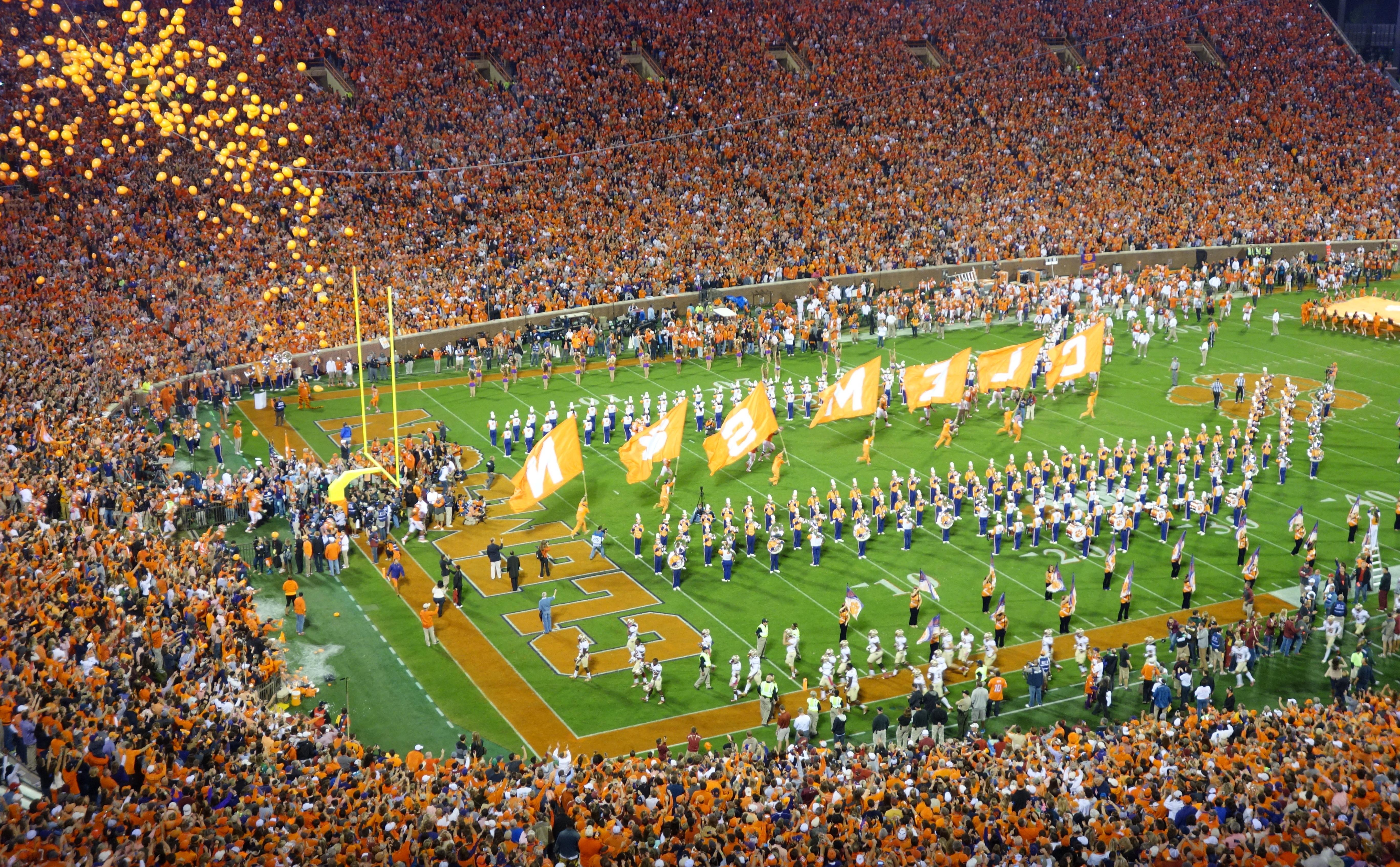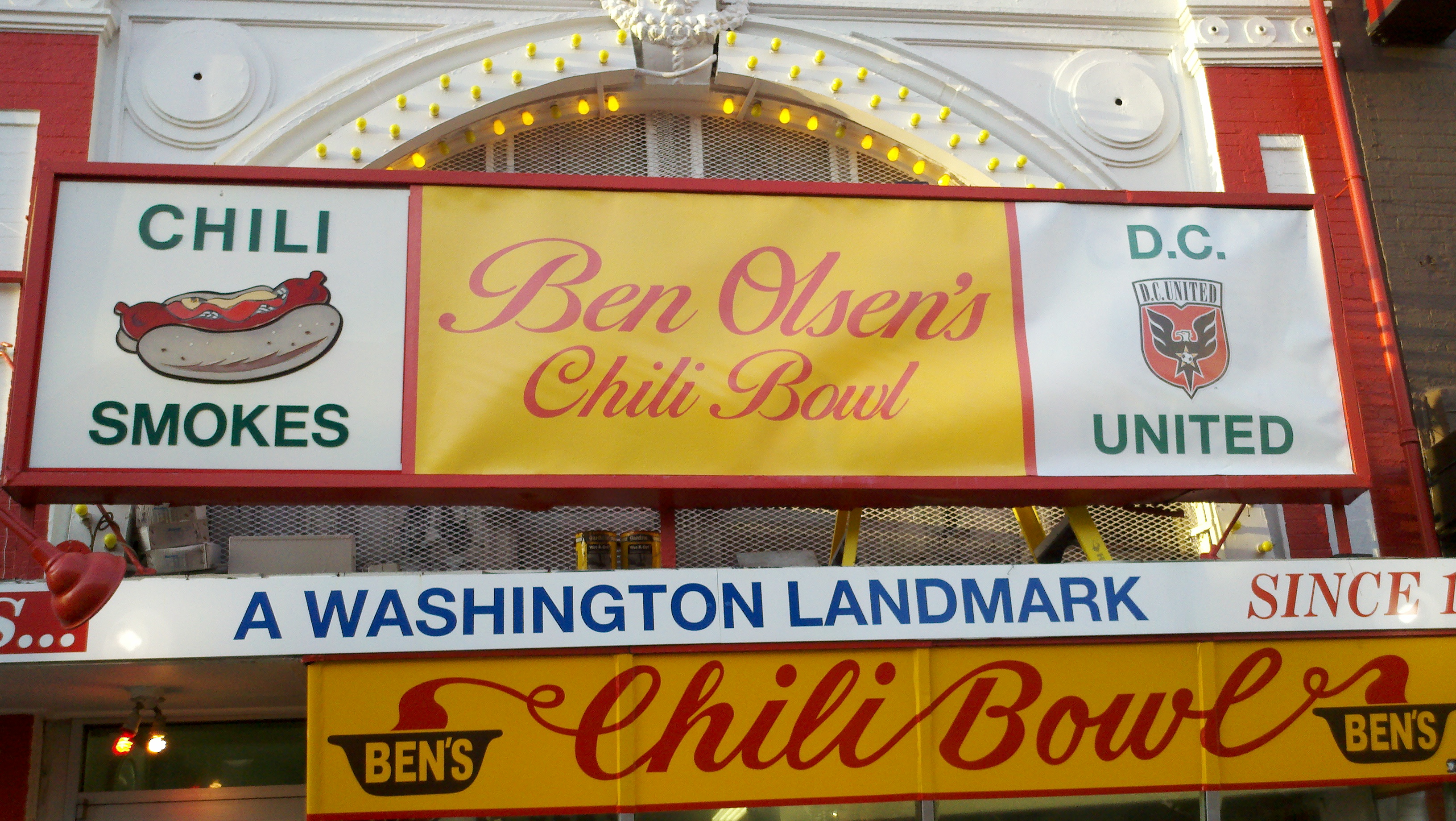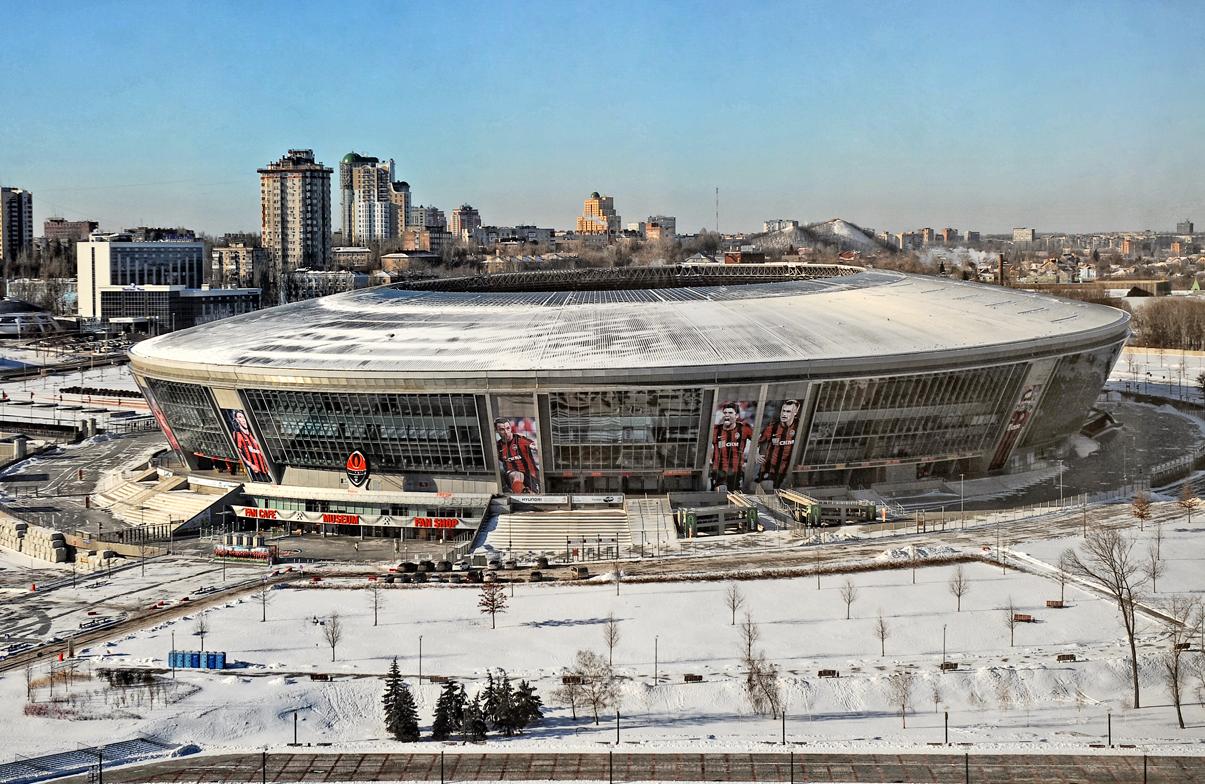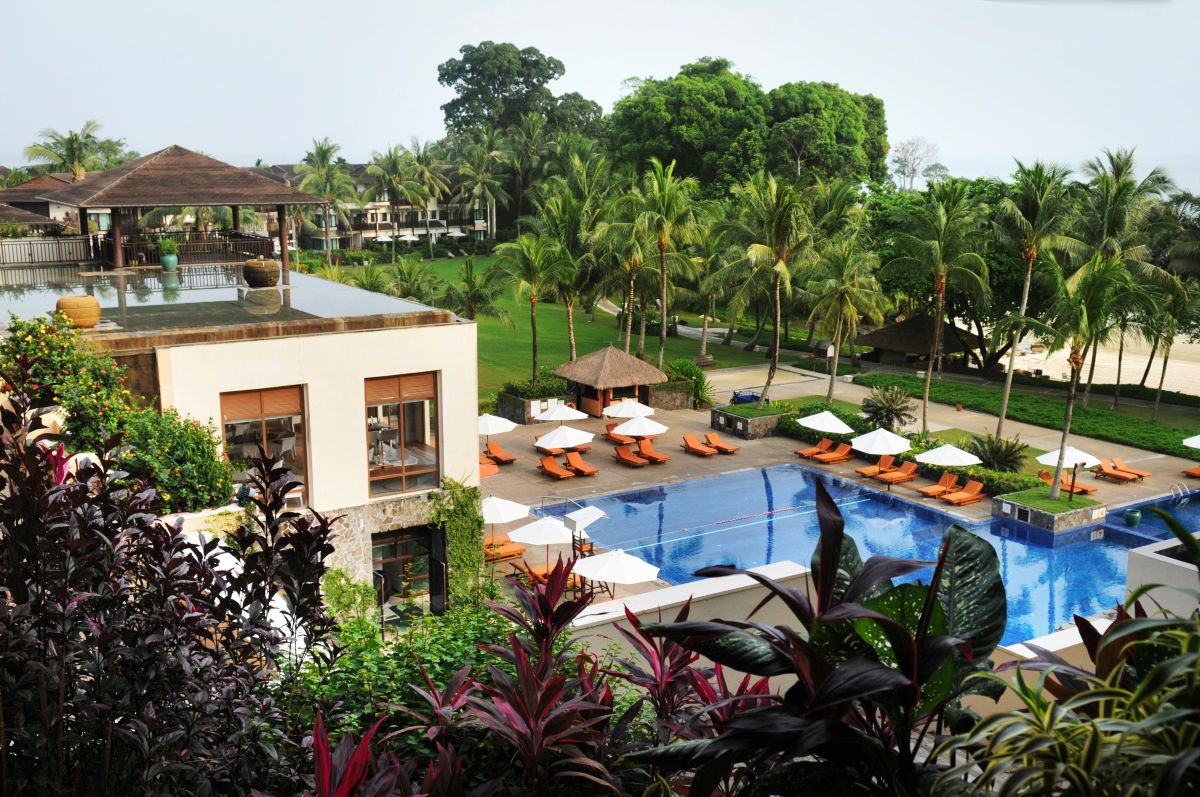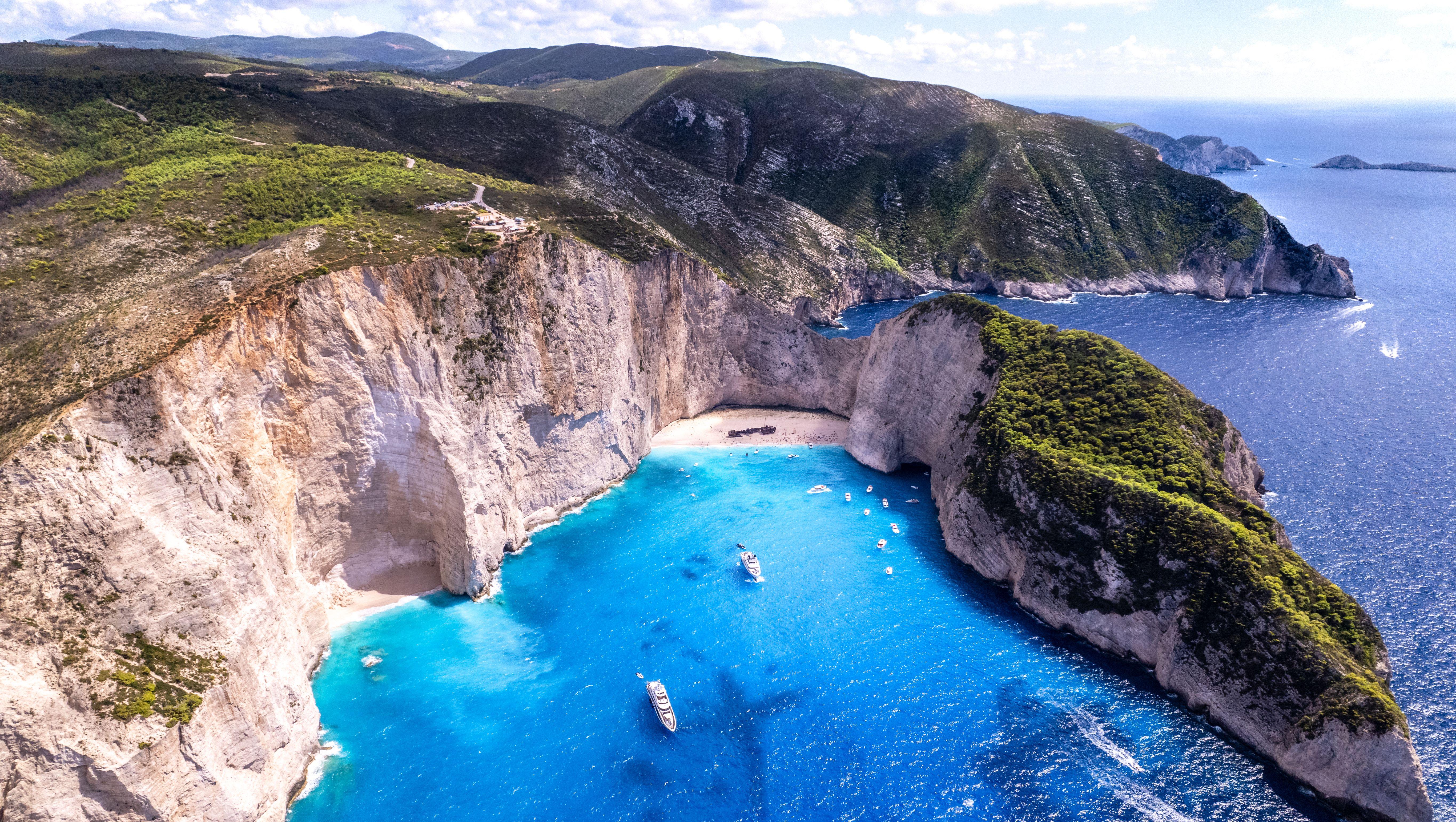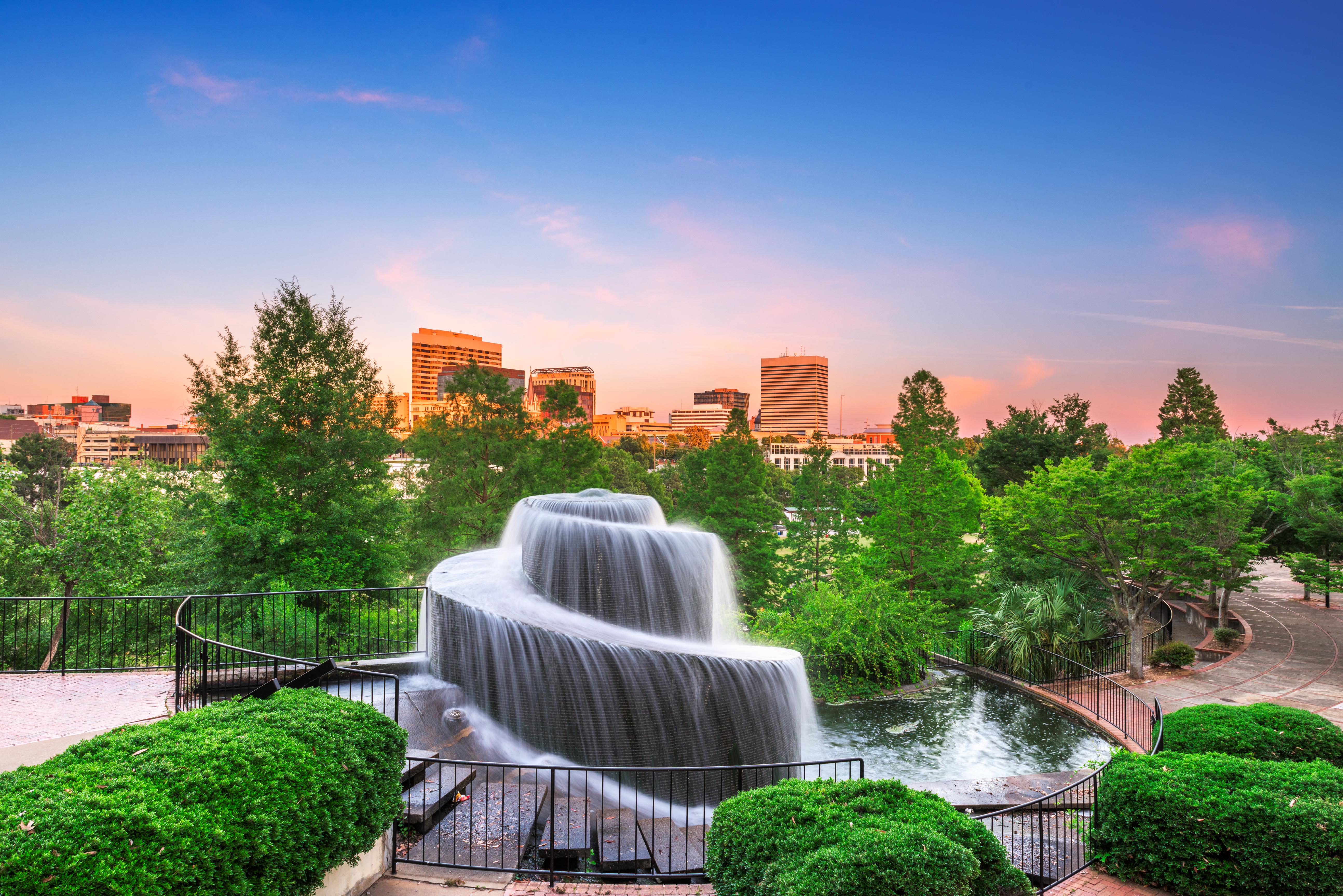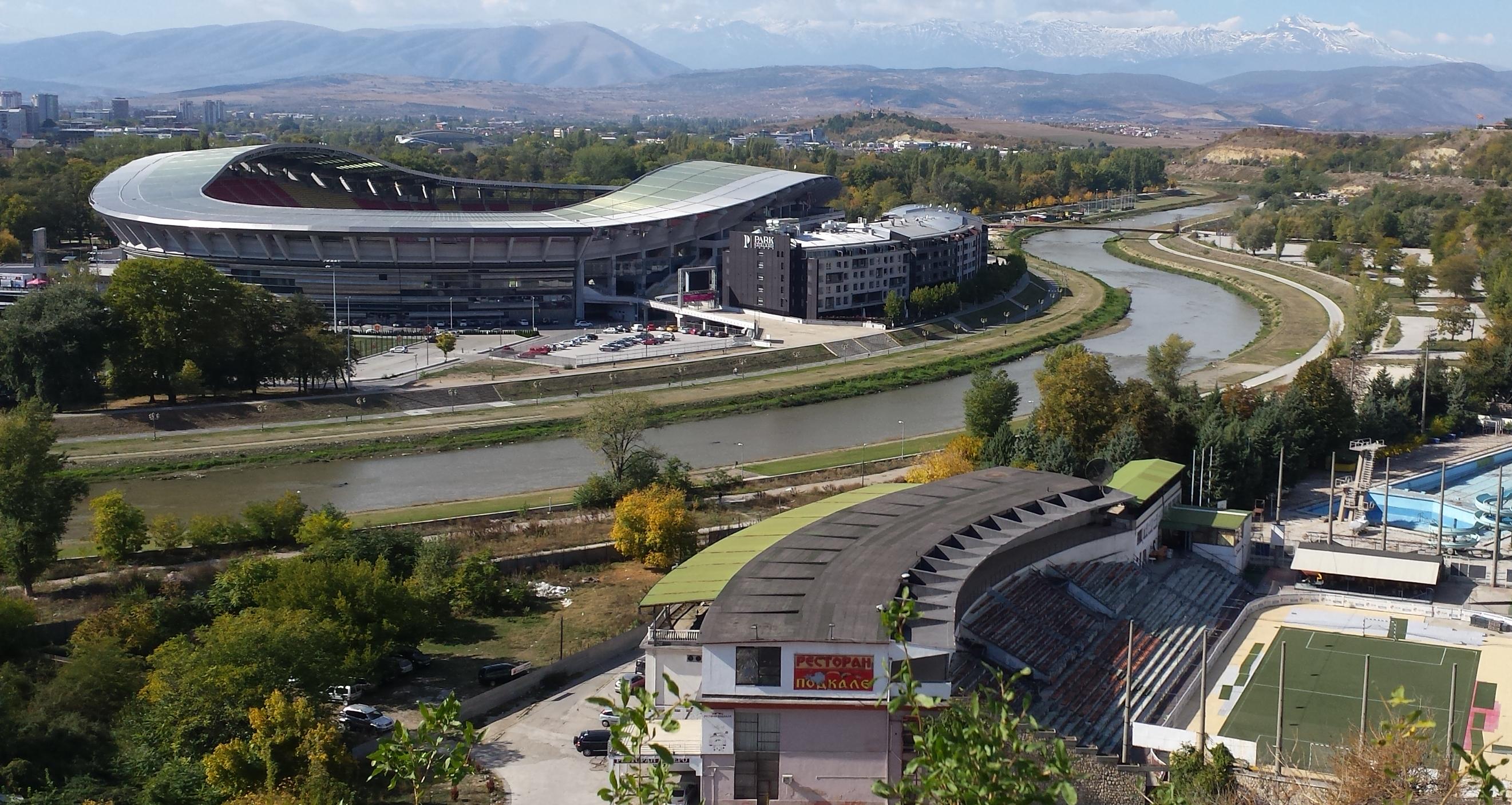Deserted Film Sets Frozen in Hollywood History
What happens to movie sets once the cameras stop rolling, the crew packs up, and the final “cut!” echoes into silence? In some cases, they’re dismantled and forgotten—but others are left behind, quietly surrendering to time. These abandoned film sets, scattered across deserts, forests, and forgotten corners of the world, have taken on lives of their own. Weathered by nature and untouched by fame, they linger as eerie monuments to cinematic dreams, where fiction once thrived and now ghosts of storytelling remain. Walking through them feels like trespassing on a memory—half real, half imagined. From crumbling Wild West towns to overgrown alien landscapes, these places blur the line between illusion and reality. We were so captivated by their haunting allure that we've expanded our list to 30 of the world’s most enigmatic abandoned film sets. Step into the forgotten frames where movie magic still flickers—just beneath the dust.
1. The Ruins of Tatooine: Star Wars in Tunisia
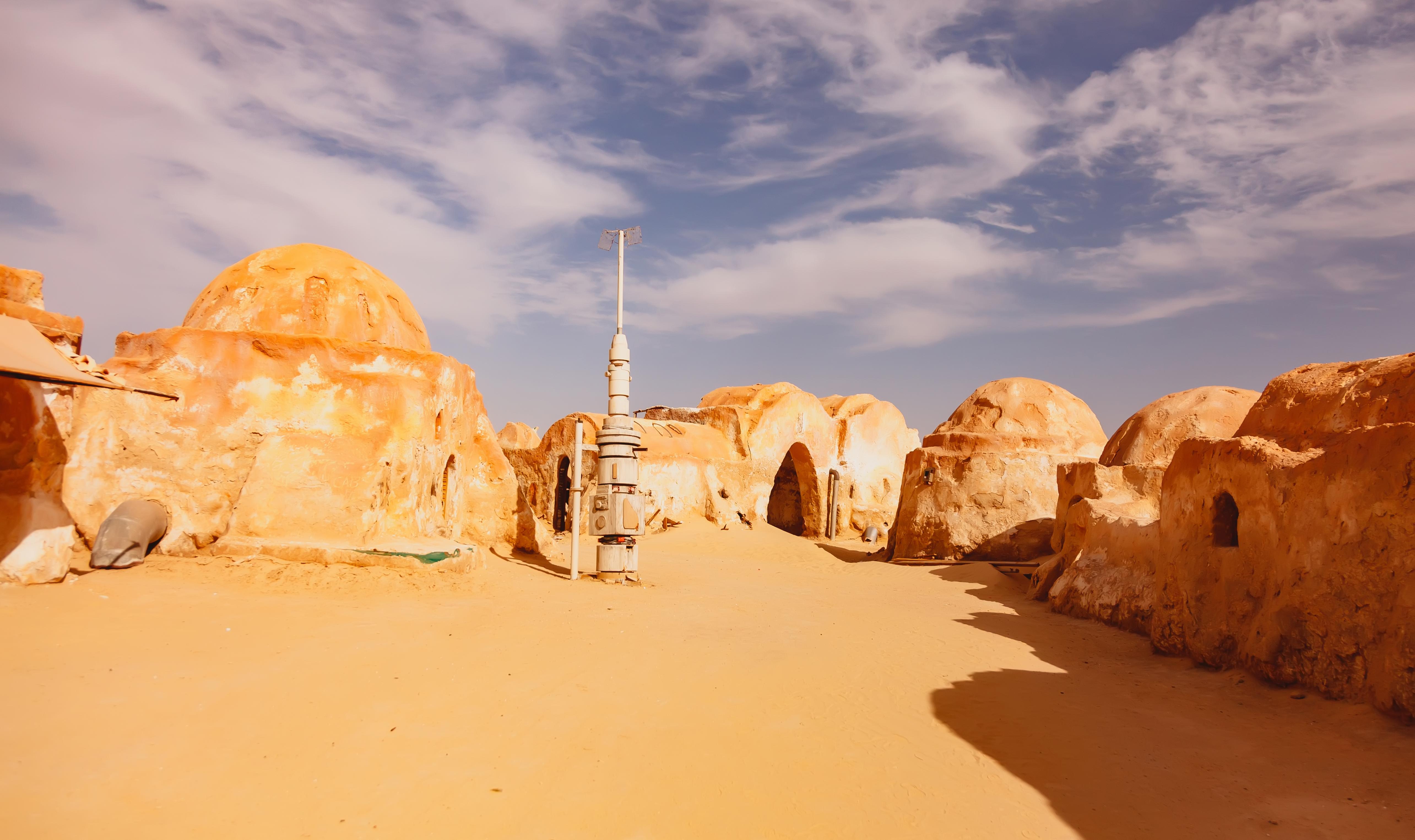
One of the most iconic abandoned film sets is the desert planet of Tatooine from the Star Wars saga. Located in the Tunisian desert, this set was used to depict Luke Skywalker's home planet. The harsh desert landscape provided the perfect backdrop for the sci-fi epic, with its distinctive domed structures and arid vistas. Today, these remnants lie scattered across the sand, a testament to the film's enduring legacy. Despite the passage of time, the site attracts fans and tourists who journey to witness the birthplace of a cultural phenomenon. The abandoned Tatooine set offers a tangible connection to the Star Wars universe, its decaying structures evoking nostalgia and wonder.
2. The Mystique of Spahn Ranch: Once Upon a Time in Hollywood
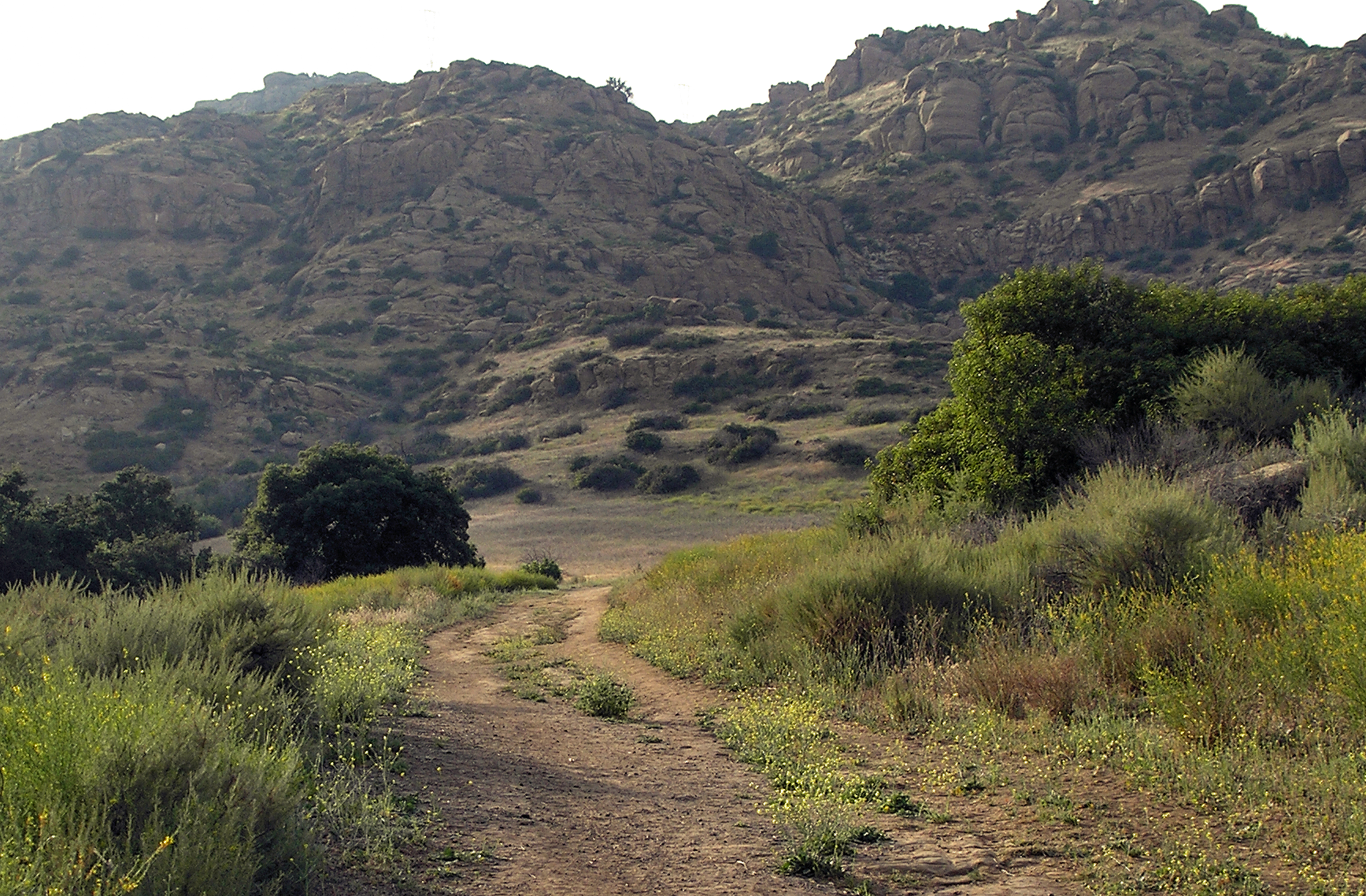
Spahn Ranch, nestled in the rugged terrain of California, served as the backdrop for numerous Western films and television shows. Its rustic charm and secluded location made it an ideal setting for tales of the Old West. However, Spahn Ranch's history took a darker turn when it became associated with the Manson Family in the late 1960s. Today, the ranch is a shadow of its former self, its once-bustling film set reduced to ruins. Despite its eerie past, Spahn Ranch remains a fascinating site for film enthusiasts and historians, symbolizing the intersection of Hollywood glamour and real-world infamy.
3. Sad Hill Cemetery: The Good, the Bad and the Ugly

In the Spanish countryside lies the iconic Sad Hill Cemetery, built specifically for the final shootout of Sergio Leone's masterpiece, The Good, the Bad and the Ugly (1966). For decades after filming, the thousands of mock grave markers decayed, leaving only the circular stone center. Recently, dedicated fans meticulously restored the site, recreating the crosses and atmosphere. Though revived, its period of abandonment and fan-led resurrection makes it a unique pilgrimage site, embodying the enduring legacy of the Spaghetti Western genre in the stark Spanish landscape.
4. End Scene Ruins: Pan's Labyrinth
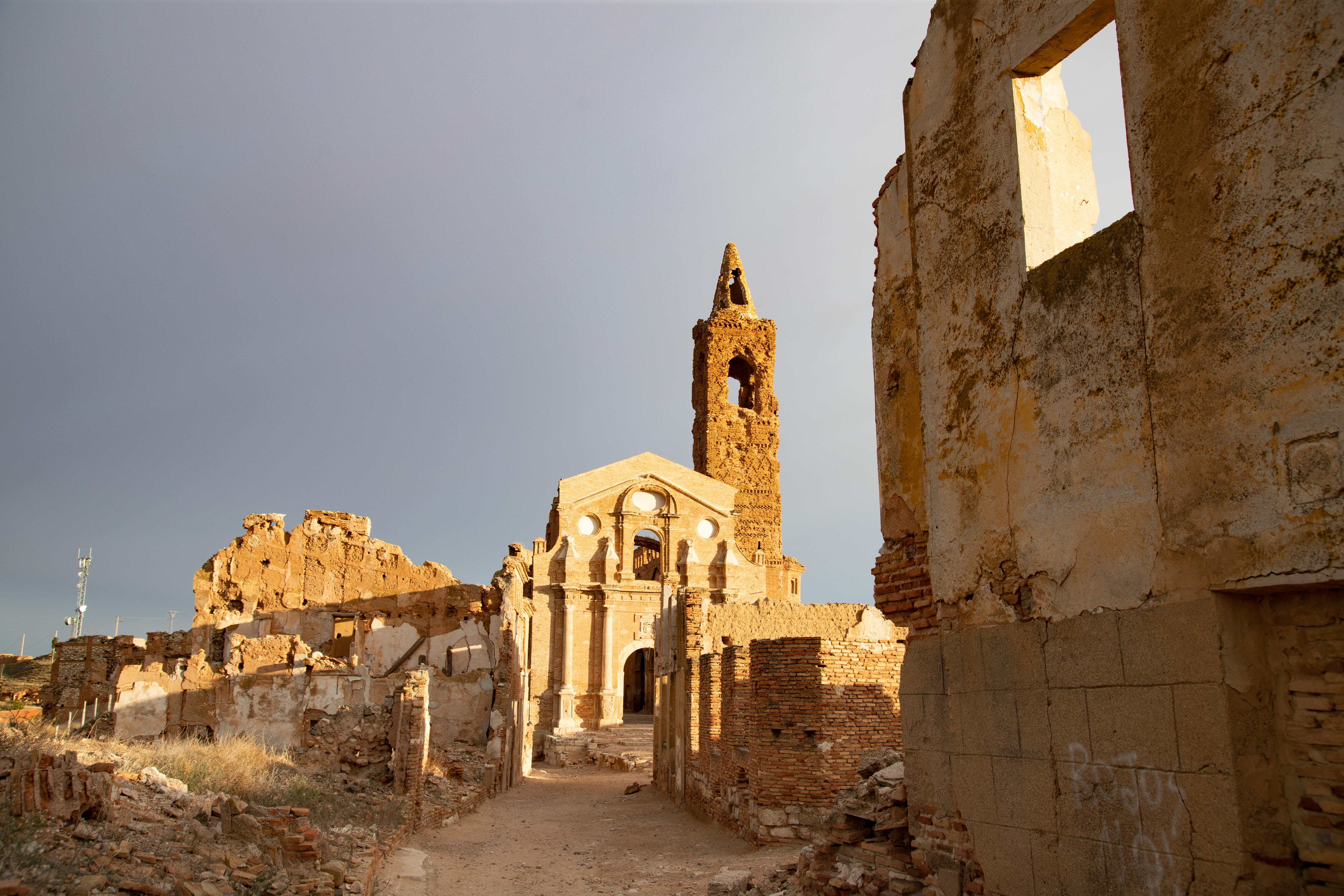
For the haunting final scenes of Guillermo del Toro’s Pan's Labyrinth (2006), the production utilized the very real ruins of Belchite, a Spanish town destroyed during the Spanish Civil War and left untouched as a monument.1 The crumbling stone walls, empty windows, and ghostly archways provided an authentic, deeply atmospheric backdrop for the film's dark fantasy elements. Visiting Belchite today means stepping into both cinematic history and actual history, exploring a tangible ghost town whose inherent decay perfectly matched the film's poignant and tragic tone.
5. Port Royal Set: Pirates of the Caribbean
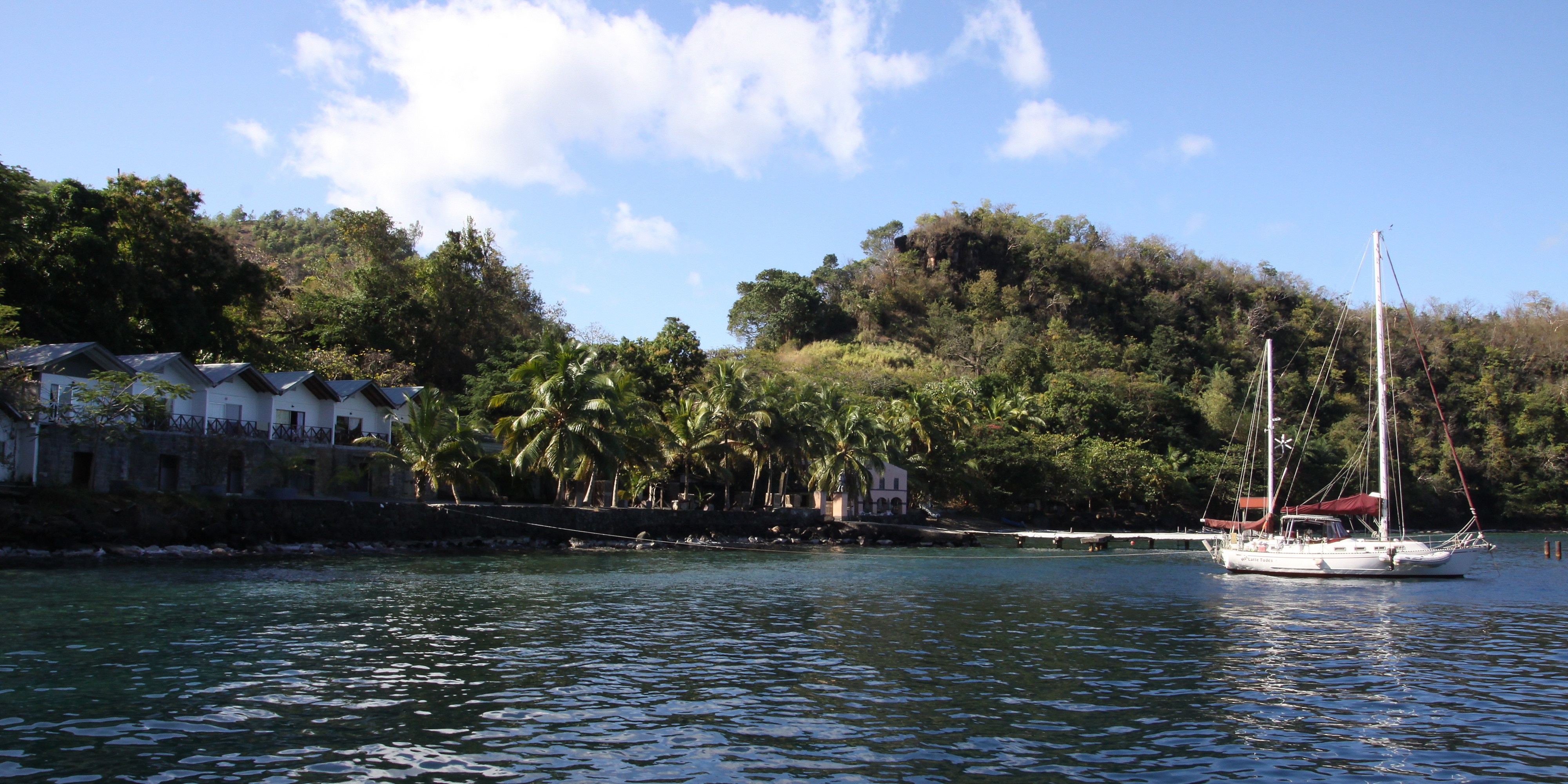
On the coast of St. Vincent island, Wallilabou Bay still holds remnants of the Port Royal set built for Disney's Pirates of the Caribbean: The Curse of the Black Pearl (2003). While some structures were temporary, key set pieces like docks, building facades, and archways were left behind. Exposed to the tropical elements, these wooden structures are gradually decaying, offering a picturesque ruin where fans can step into Captain Jack Sparrow's world. It's a tangible piece of blockbuster history slowly being reclaimed by the Caribbean environment.
6. M*A*S*H Outdoor Set
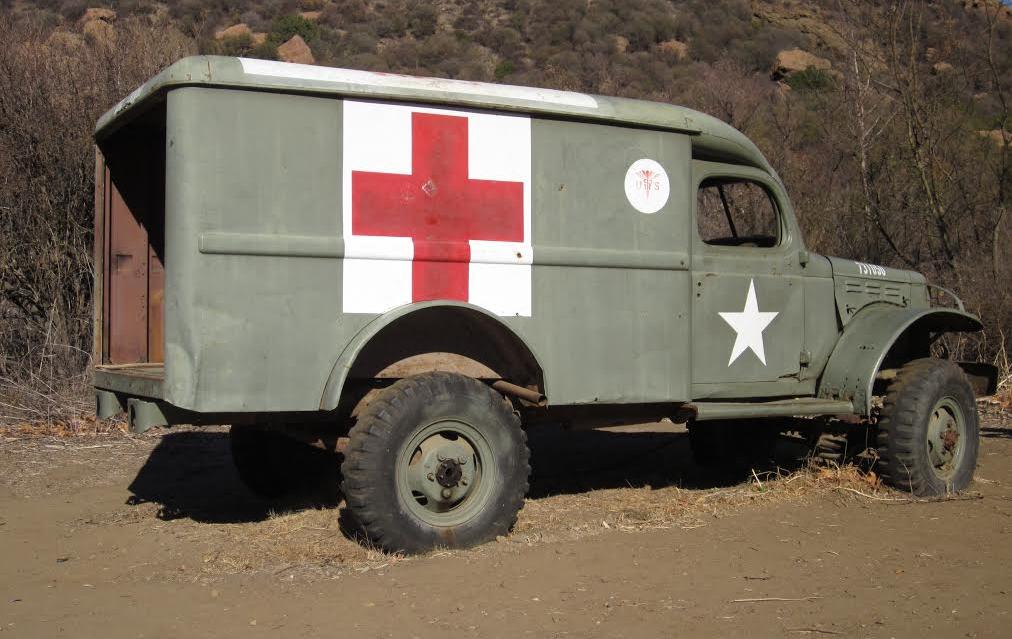
The iconic outdoor set for the beloved TV series M*A*S*H, representing the 4077th Mobile Army Surgical Hospital in Korea, was actually located in Malibu Creek State Park, California. While a 1982 wildfire destroyed many structures, key elements survived and became landmarks. Visitors can hike to the site and still find rusted Jeeps and ambulances used in the show, along with the iconic directional signpost pointing to various cities. Though weathered by time and nature, these remnants offer a powerful nostalgic connection to the classic series amidst the scenic California hills.
7. Huế City Set / Beckton Gas Works: Full Metal Jacket
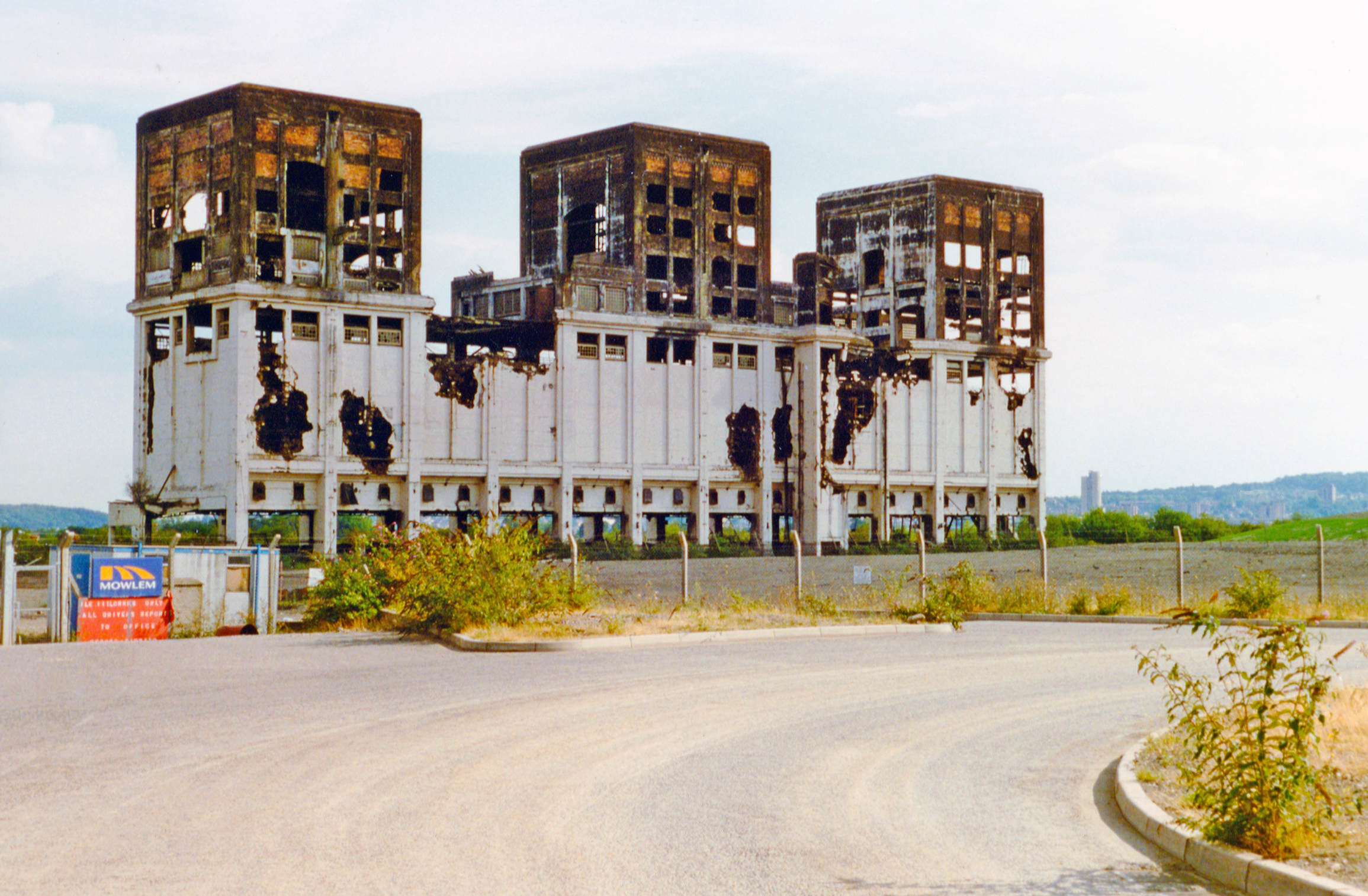
To recreate the war-torn city of Huế for Stanley Kubrick’s Full Metal Jacket (1987), an abandoned gas works in Beckton, East London, was dramatically transformed. This derelict industrial site, with its brutalist architecture, was partially demolished and styled to resemble battle-scarred Vietnam. After filming, the site remained derelict for years before further redevelopment. While much is gone, the area retains some industrial ruins and the haunting memory of its cinematic transformation, showcasing how filmmakers can repurpose urban decay into powerful cinematic landscapes.
8. Looper Diner: Looper
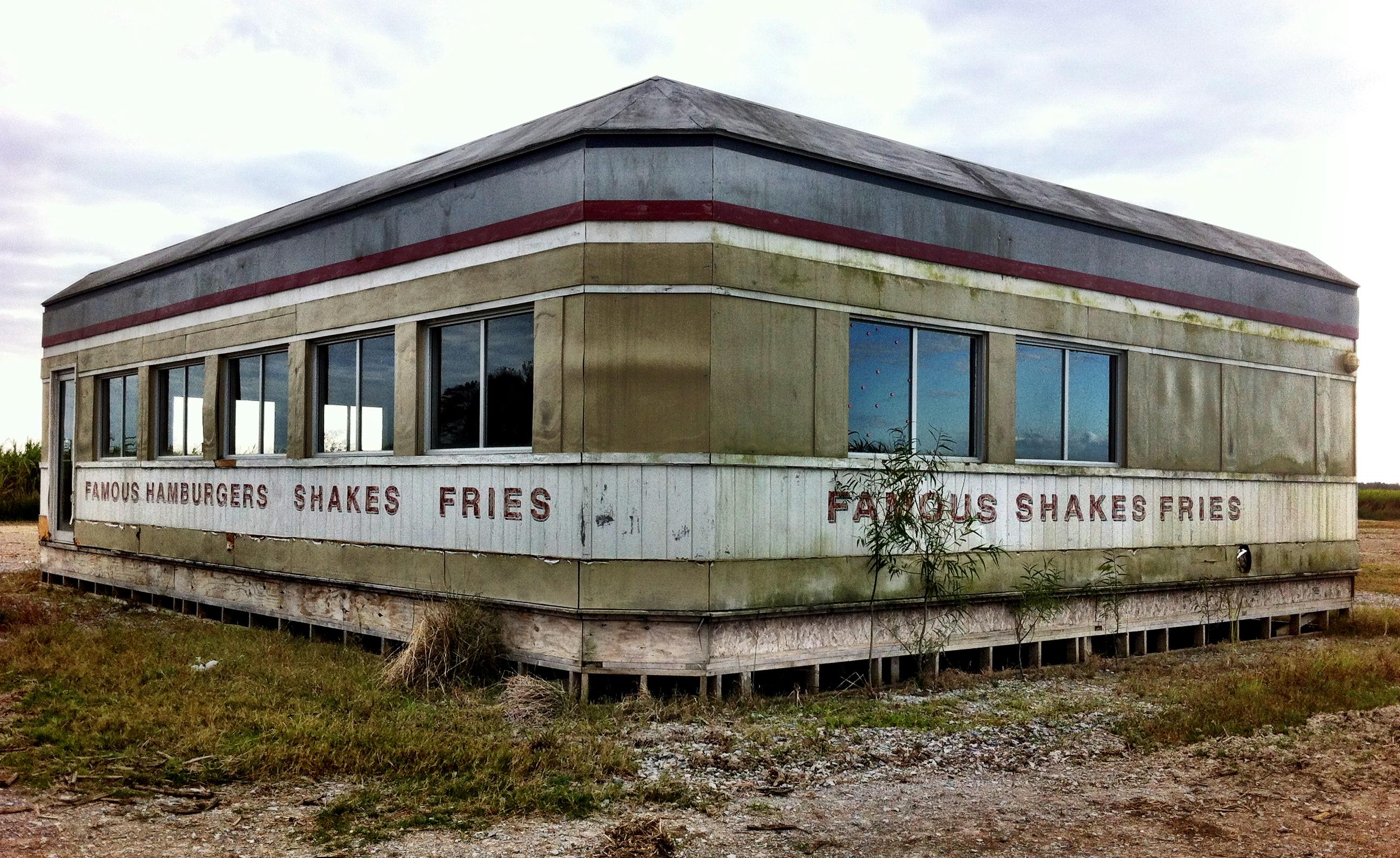
For the sci-fi thriller Looper (2012), a standalone, retro-style diner was constructed in the middle of a sugarcane field near Thibodaux, Louisiana. After filming wrapped, this complete structure, known as "Liz's Diner" in the film, was simply left behind. It became an eerie landmark, isolated in the field, attracting photographers and urban explorers drawn to its decaying Americana aesthetic. The abandoned diner serves as a striking visual remnant of the film's production, slowly weathering in the rural Louisiana landscape.
9. Town of Spectre: Big Fish
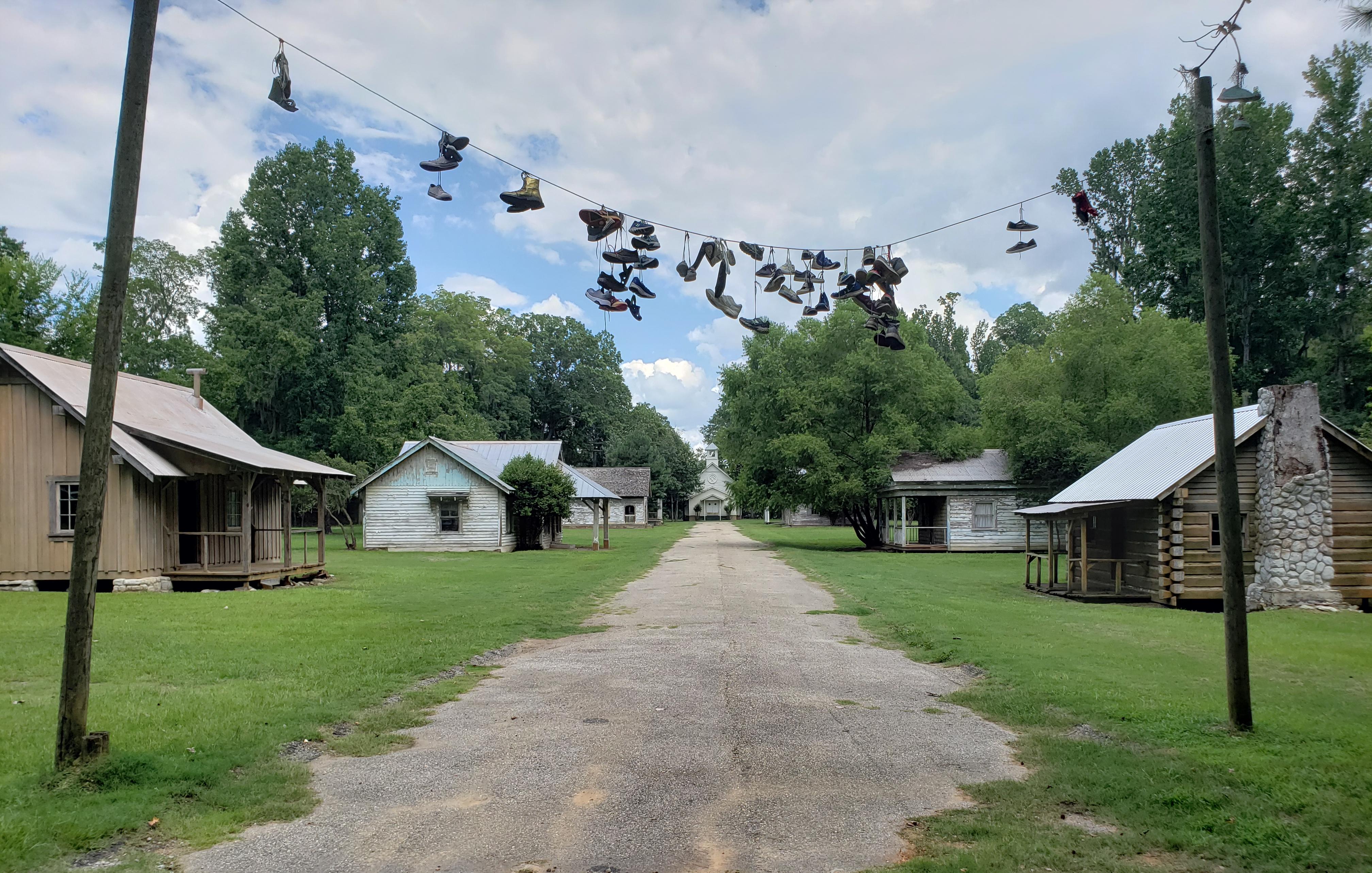
Tim Burton created the idyllic, fictional town of Spectre for his film Big Fish (2003) on Jackson Lake Island near Millbrook, Alabama. Complete with charming houses, a church, and fake trees, the whimsical set was partially left behind after filming. Located on private property, the styrofoam and wood structures have significantly decayed over the years, becoming a hauntingly beautiful ghost town. While access varies, Spectre remains a fascinating example of a purpose-built fantasy world slowly surrendering to the elements, embodying the film's themes of myth and memory.
10. Gas Haven Set: The Hills Have Eyes Remake
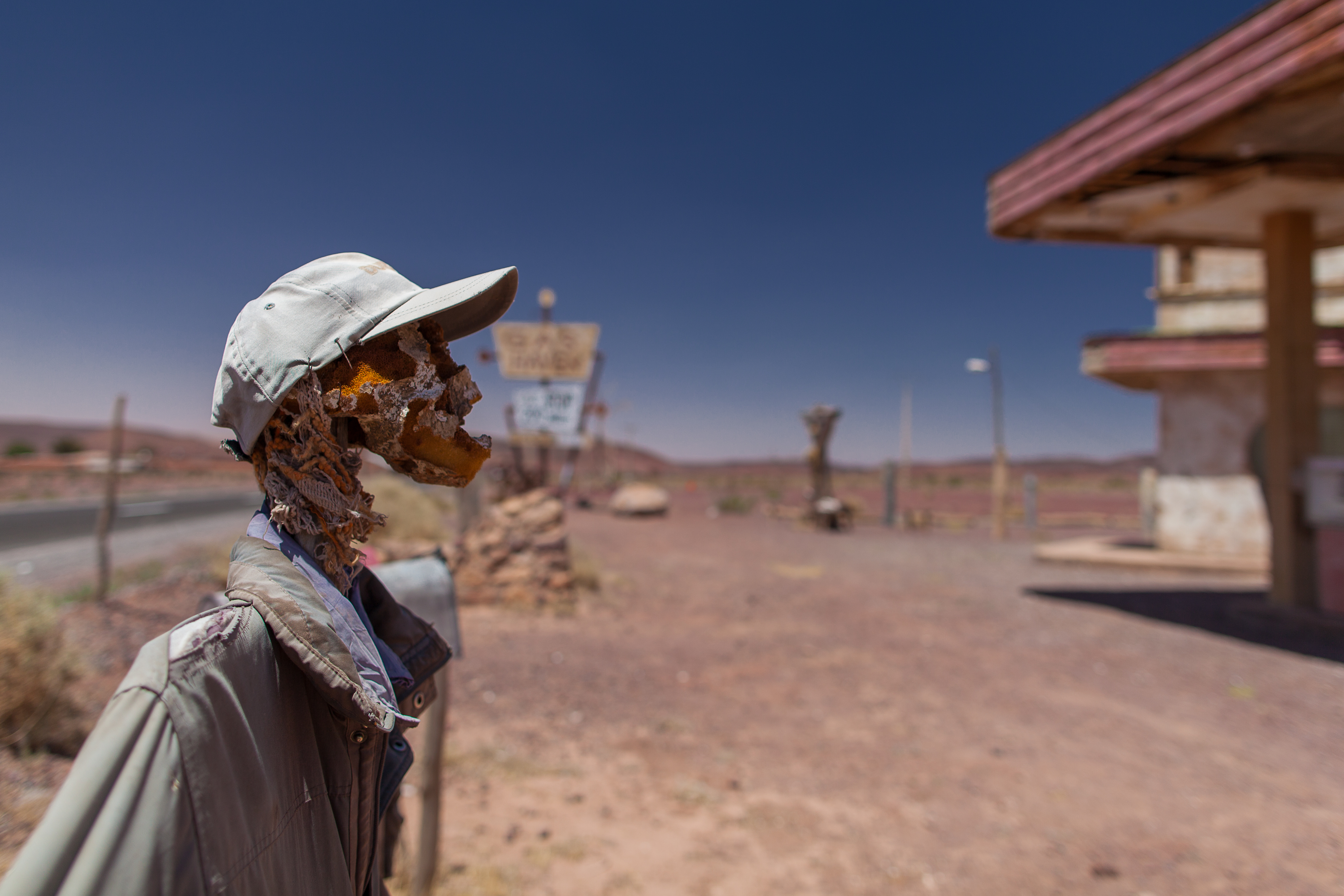
In the Moroccan desert near Ouarzazate lies the creepy, abandoned gas station and diner set built for the 2006 remake of The Hills Have Eyes. This fictional outpost, named "Gas Haven," was designed to look isolated and menacing. After production, the entire structure—including the gas pumps, diner building, and signage—was left standing. It has since become a popular spot for desert travelers and film tourists, its decaying facade providing a perfectly eerie photo opportunity against the stark desert backdrop, a tangible piece of horror film history.
11. Contrabando Movie Set Town: Westerns
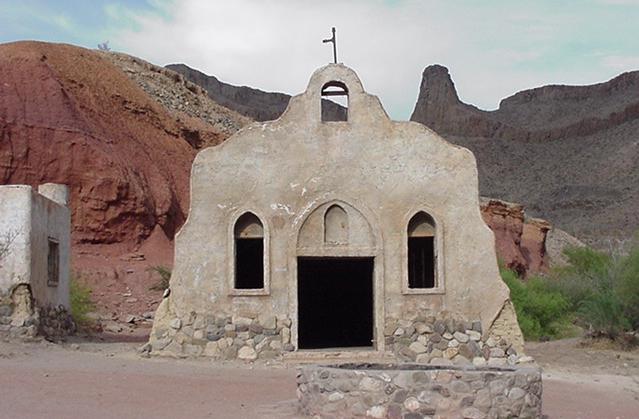
Along the Rio Grande in Big Bend Ranch State Park, Texas, lie the weathered ruins of Contrabando, a movie set town used for numerous Westerns, including Lone Star (1996) and Streets of Laredo. Originally built in the 1980s, the adobe-style structures representing a Mexican border town were damaged by floods and time. While park authorities sometimes stabilize remnants, the site largely exists as picturesque ruins against the dramatic desert landscape. It offers a glimpse into the region's film history and the ephemeral nature of these purpose-built cinematic worlds.
12. Hansel & Gretel: Witch Hunters Set
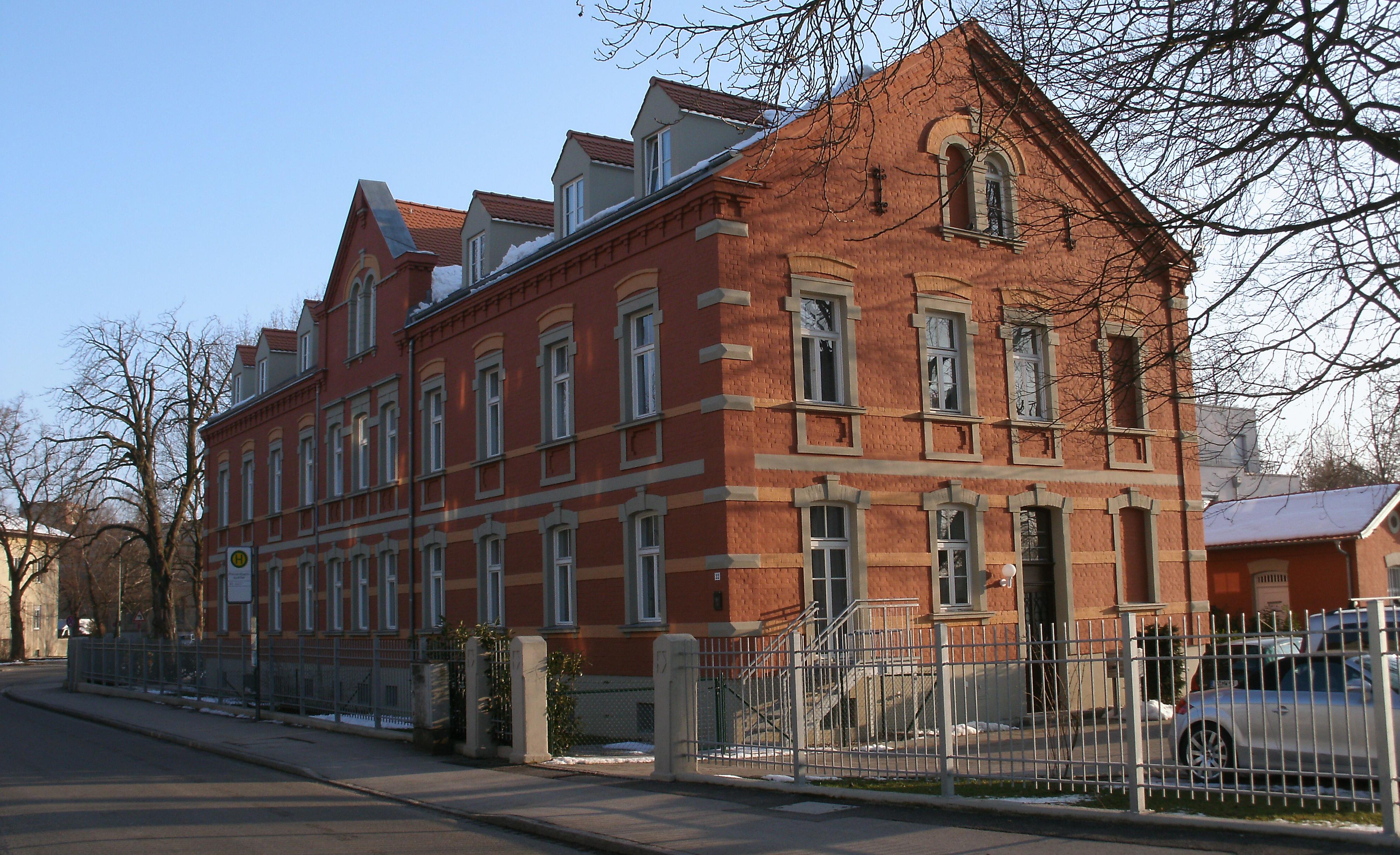
Deep in a forest outside Berlin, Germany, remnants of the medieval town of Augsburg built for Hansel & Gretel: Witch Hunters (2013) can still be found. The production constructed detailed half-timbered houses and structures for the fantasy-action film. After shooting concluded, parts of the village set were left behind to decay naturally within the woods. Explorers have documented the weathering facades and collapsing structures slowly being reclaimed by the forest, creating an atmospheric and slightly eerie scene straight out of a dark fairytale.
13. Atlas Corporation Studios Sets: Various Films

Located near Ouarzazate, Morocco, Atlas Studios is one of the world's largest film studios, famous for its desert landscapes. While an active studio, its vast backlots contain numerous large-scale sets from previous productions that have been left standing and are slowly decaying under the harsh desert conditions. Visitors can explore remnants of Egyptian temples (Asterix & Obelix: Mission Cleopatra), Tibetan monasteries (Kundun), and ancient Roman/biblical cities (Gladiator, Kingdom of Heaven), offering a surreal journey through abandoned cinematic worlds existing side-by-side.
14. Lord of the Rings - Amon Hen Set
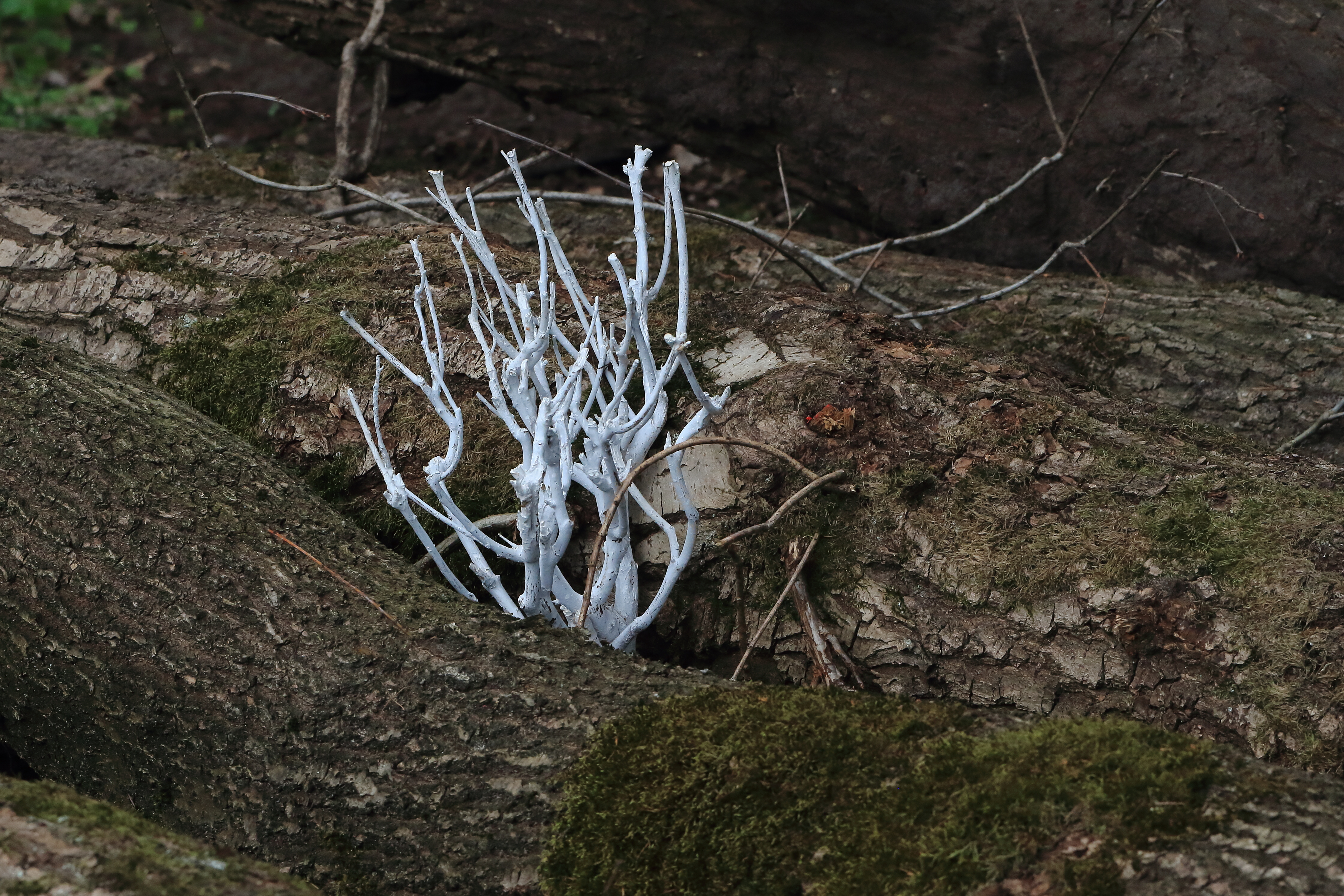
While Hobbiton is preserved, other Lord of the Rings locations feature decaying set pieces. Near Queenstown, New Zealand, the location for Amon Hen (where Boromir's death was filmed in The Fellowship of the Ring) still contains remnants. Set pieces like the stone archways and the Seeing Seat structure were built amongst the trees in Closeburn Pinetum. Though nature is reclaiming them, and some parts may have been removed, dedicated fans can still find recognizable weathered elements from the film integrated into the forest, offering a subtle link to Middle-earth.
15. The Alamo Village: The Alamo 1960
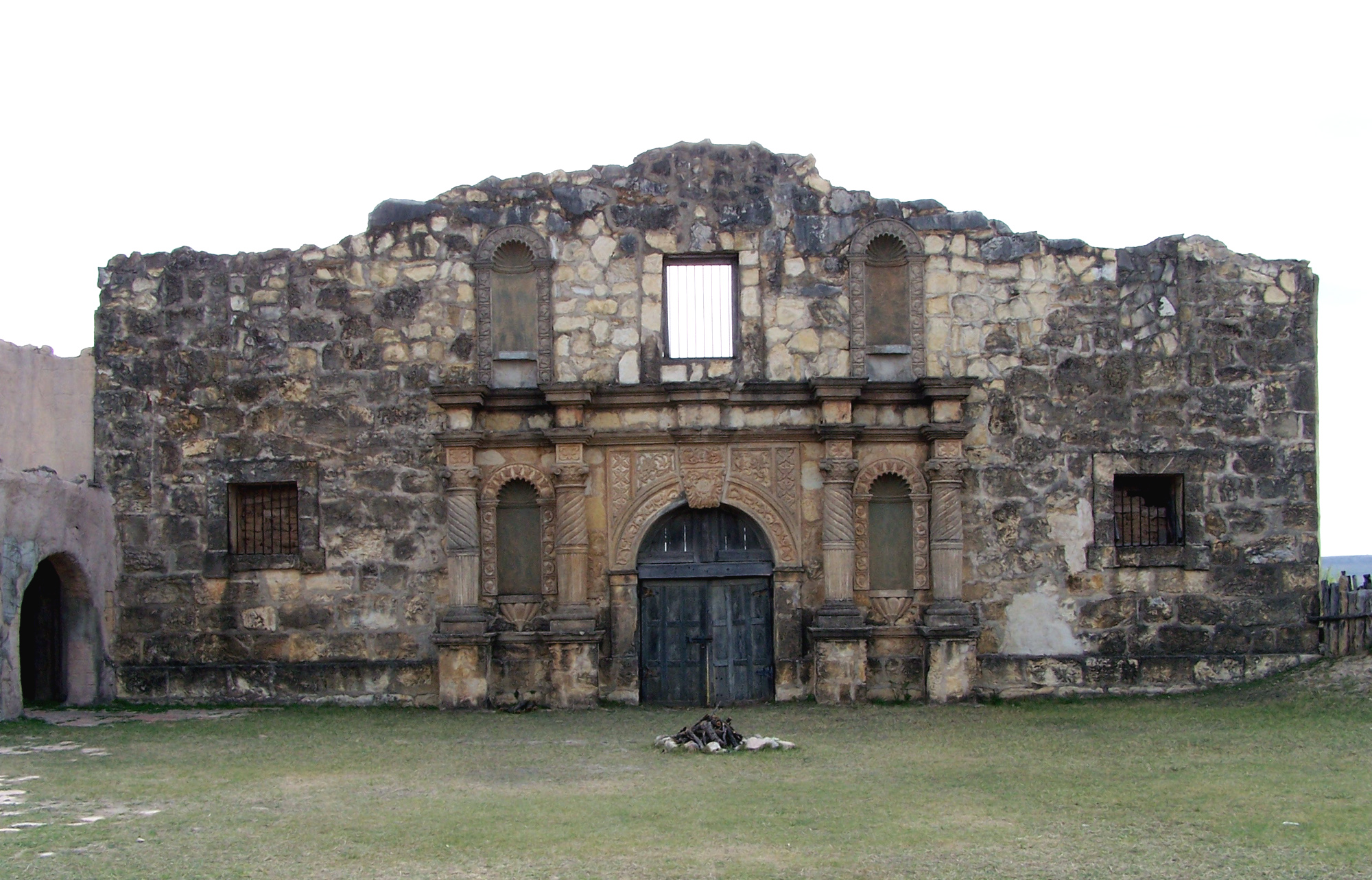
Constructed for John Wayne's epic film The Alamo (1960) near Brackettville, Texas, Alamo Village was a full-scale replica of the Alamo compound and 1836 San Antonio. For nearly 50 years after the film, it operated as a tourist attraction and active Western film set. However, it closed permanently to the public in 2010. While maintained privately for a time, the structures face an uncertain future and the effects of time, representing a significant piece of Western film history potentially fading away.
16. Popeye Village, Malta: Sweethaven Lives On

For the 1980 musical "Popeye" starring Robin Williams, an elaborate village called Sweethaven was constructed in Malta's Anchor Bay. With its whimsical, crooked houses and seaside charm, the massive set was too good to dismantle. After filming, it was converted into a popular family tourist attraction. While not "abandoned" to decay in the traditional sense, Popeye Village remains a perfectly preserved, tangible piece of cinematic history, allowing visitors to literally step into the quirky, colorful world of the beloved sailor man, decades after the cameras stopped rolling.
17. Ksar Ouled Soltane, Tunisia: Real-World Tatooine Slave Quarters

Beyond the purpose-built domed homes, George Lucas utilized existing historical structures in Tunisia for Star Wars. The magnificent Ksar Ouled Soltane, a centuries-old Berber fortified granary with its distinctive stacked, vaulted ghorfas (storage rooms), became the striking backdrop for the slave quarters of Mos Espa in "The Phantom Menace." This stunning, multi-story adobe structure is not a decaying set but a well-preserved historical monument. Visitors can explore its unique architecture and feel instantly transported to Anakin Skywalker's early life, offering an authentic and awe-inspiring piece of cinematic and cultural history.
18. Cinecittà World's Ancient Rome & "Ben Hur" Sets, Italy: Epic History Reborn
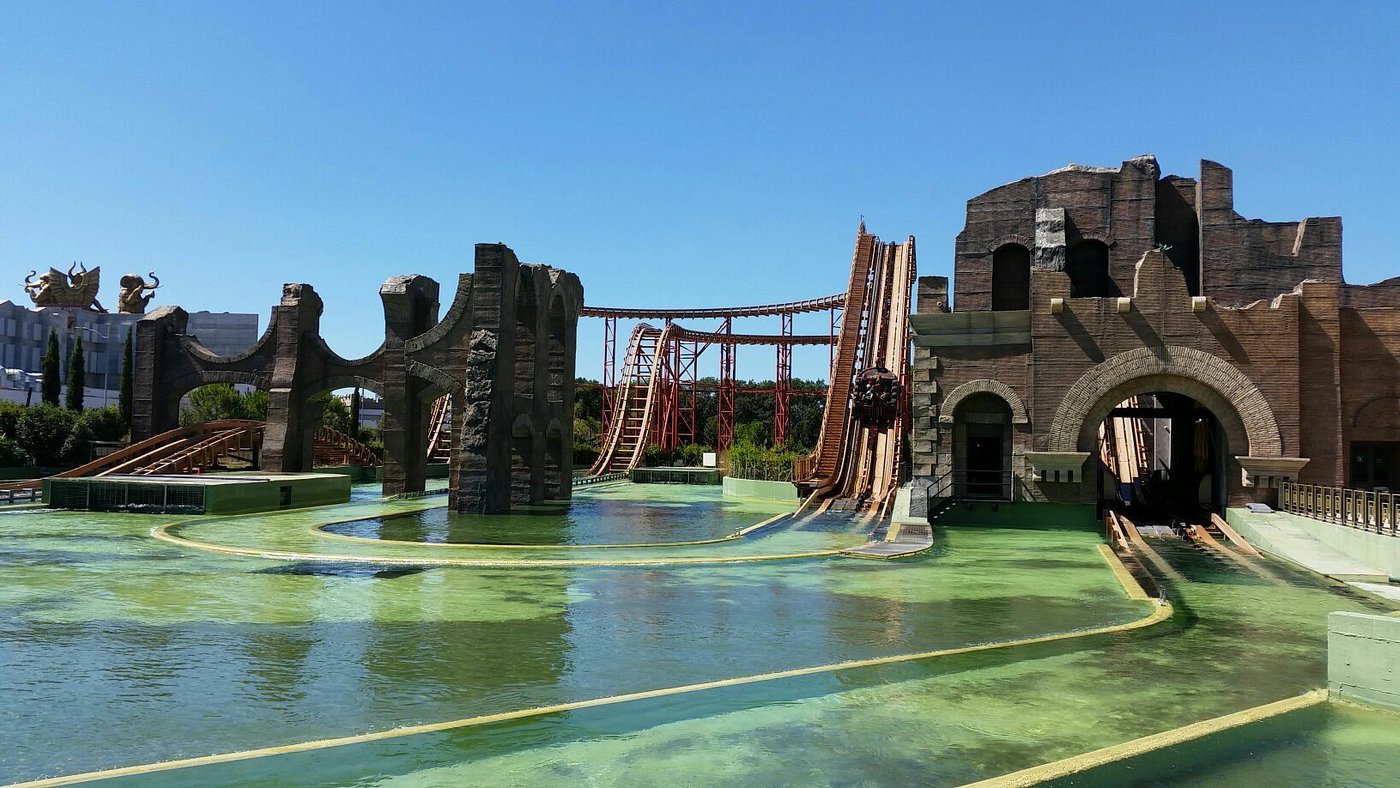
Step into the grandeur of Ancient Rome at Cinecittà World, a cinema and TV-themed amusement park near Rome, built on part of the legendary Cinecittà Studios grounds. Its impressive "Ancient Rome" area features monumental sets originally constructed for major productions like the TV series "Rome." While now part of a theme park experience, these streets, temples, and arenas, including a space used for "Ben Hur" style chariot race shows, offer a tangible, immersive journey into classic cinematic epics. It's a place where historical film sets live on, accessible for all to explore.
19. Silverado Movie Town (Cook Ranch), New Mexico, USA: A Western Legend Lives On
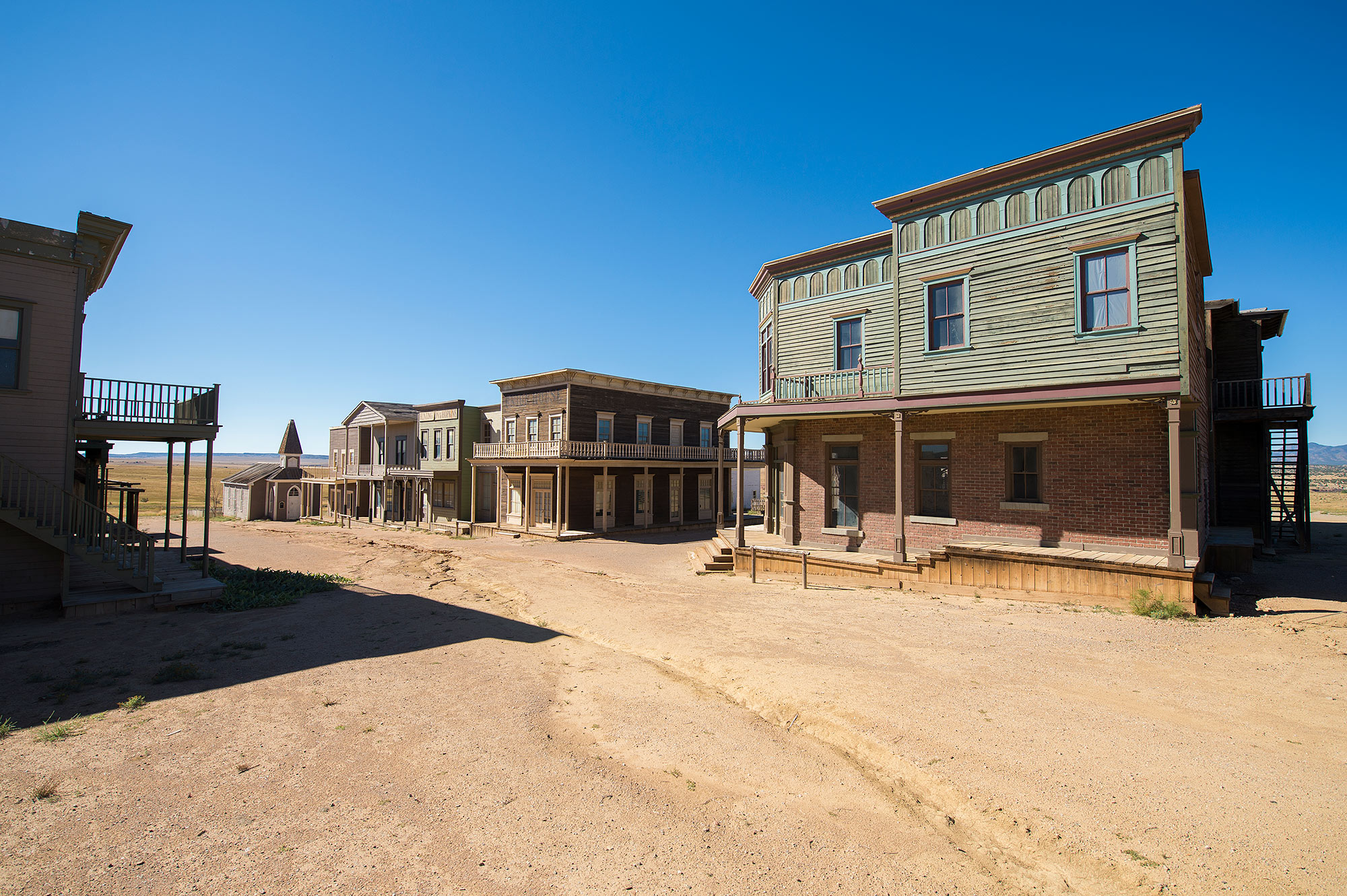
Near Santa Fe, New Mexico, the Cook Ranch has been home to the iconic Silverado movie town since it was built for the 1985 classic Western. This sprawling, authentic-looking frontier town has since featured in numerous films and TV shows, including "Lonesome Dove," "Wyatt Earp," and "3:10 to Yuma." Though it has faced threats from wildfires and the passage of time, parts of the town have been preserved or rebuilt. As a working film ranch, Silverado stands as a dynamic testament to the enduring appeal of the Western genre, its dusty streets echoing with cinematic history.
20. "The Abyss" Underwater Domes, South Carolina, USA: Sunken Spectacle
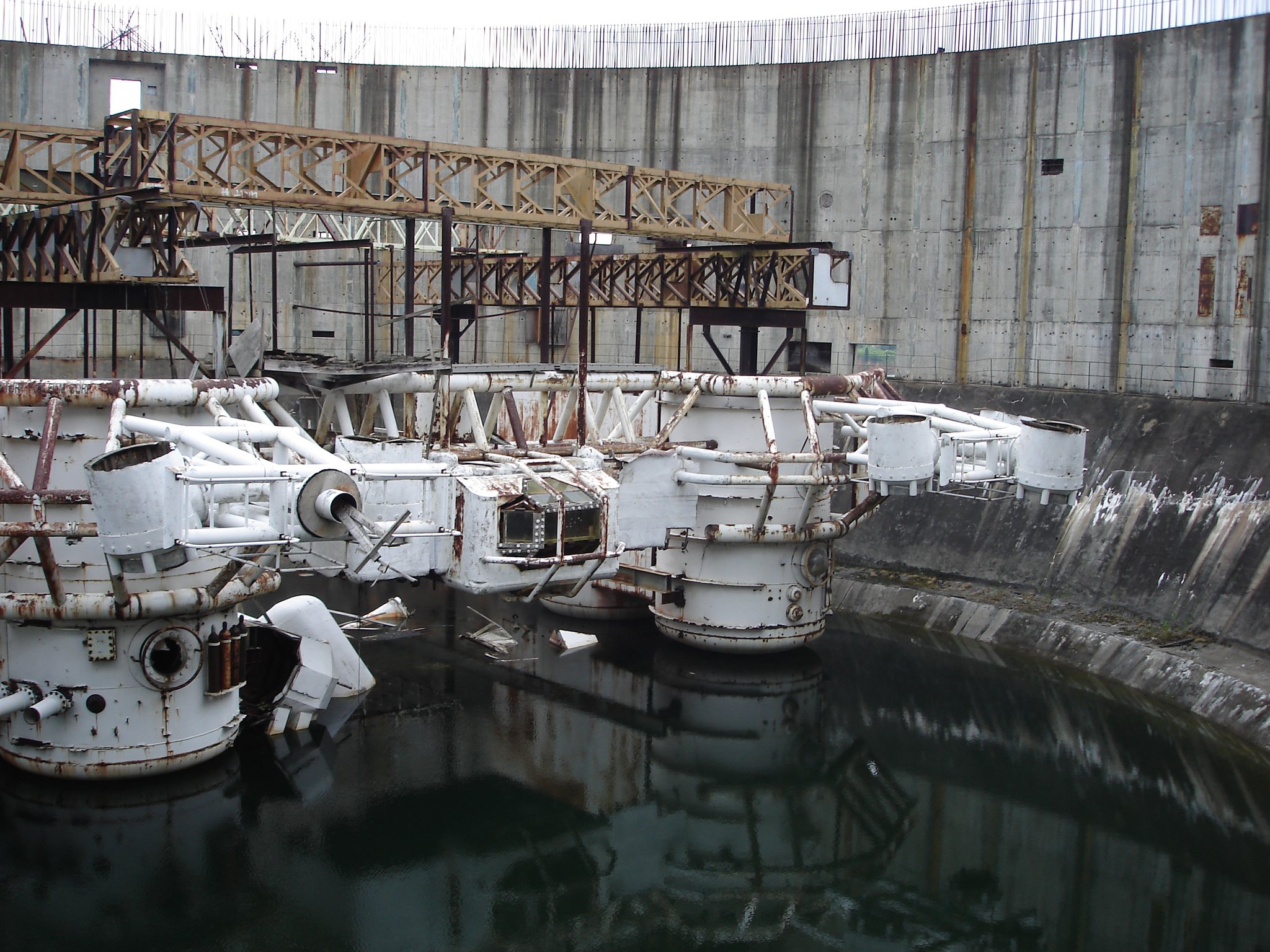
James Cameron's ambitious 1989 sci-fi "The Abyss" required massive underwater sets. Two enormous, unfinished concrete containment vessels at a never-completed nuclear power plant in Gaffney, South Carolina, were filled with water to become the film’s deep-sea environment. Intricate structures representing the underwater habitat were built within. After filming, these colossal tanks and some internal set elements were largely abandoned, though not publicly accessible. They represent an extraordinary, hidden feat of engineering and filmmaking, a man-made abyss left to its watery silence.
21. "Waterworld" Atoll Remnants, Hawaii, USA: A Sunken Saga

The notoriously expensive 1995 film "Waterworld" featured a colossal, purpose-built atoll set off the coast of Kawaihae, Hawaii. This floating fortress, a marvel of engineering, faced numerous challenges during production, including a hurricane. After filming, parts of the massive structure reportedly sank or were dismantled, while other elements were repurposed or simply left to the mercy of the ocean. Its remnants, whether visible or submerged, tell a tale of extreme filmmaking ambition and the ephemeral nature of even the grandest cinematic constructions.
22. Henry River Mill Village ("District 12"), North Carolina, USA: From Ghost Town to Icon
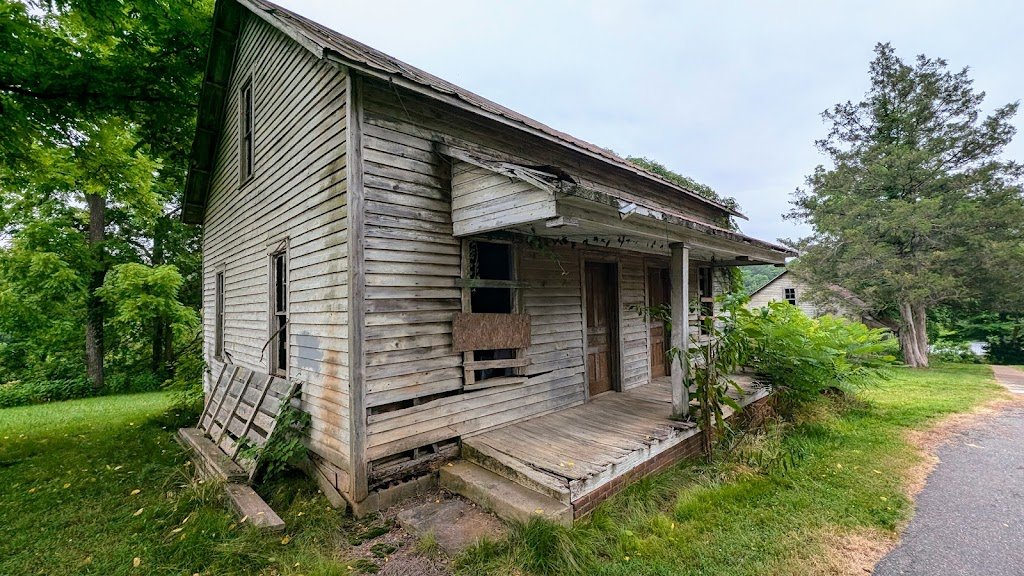
The abandoned Henry River Mill Village in Burke County, North Carolina, with its early 20th-century wooden houses and company store, already had a ghostly charm before Hollywood arrived. It was chosen as the evocative setting for District 12, Katniss Everdeen's home, in "The Hunger Games" (2012). Filming brought global attention to this forgotten village. While still privately owned and largely dilapidated, its iconic appearance in the blockbuster transformed it into a unique tourist destination, where real history and cinematic dystopia fascinatingly intertwine.
23. Almería Spaghetti Western Town Sets, Spain: Echoes of Ennio
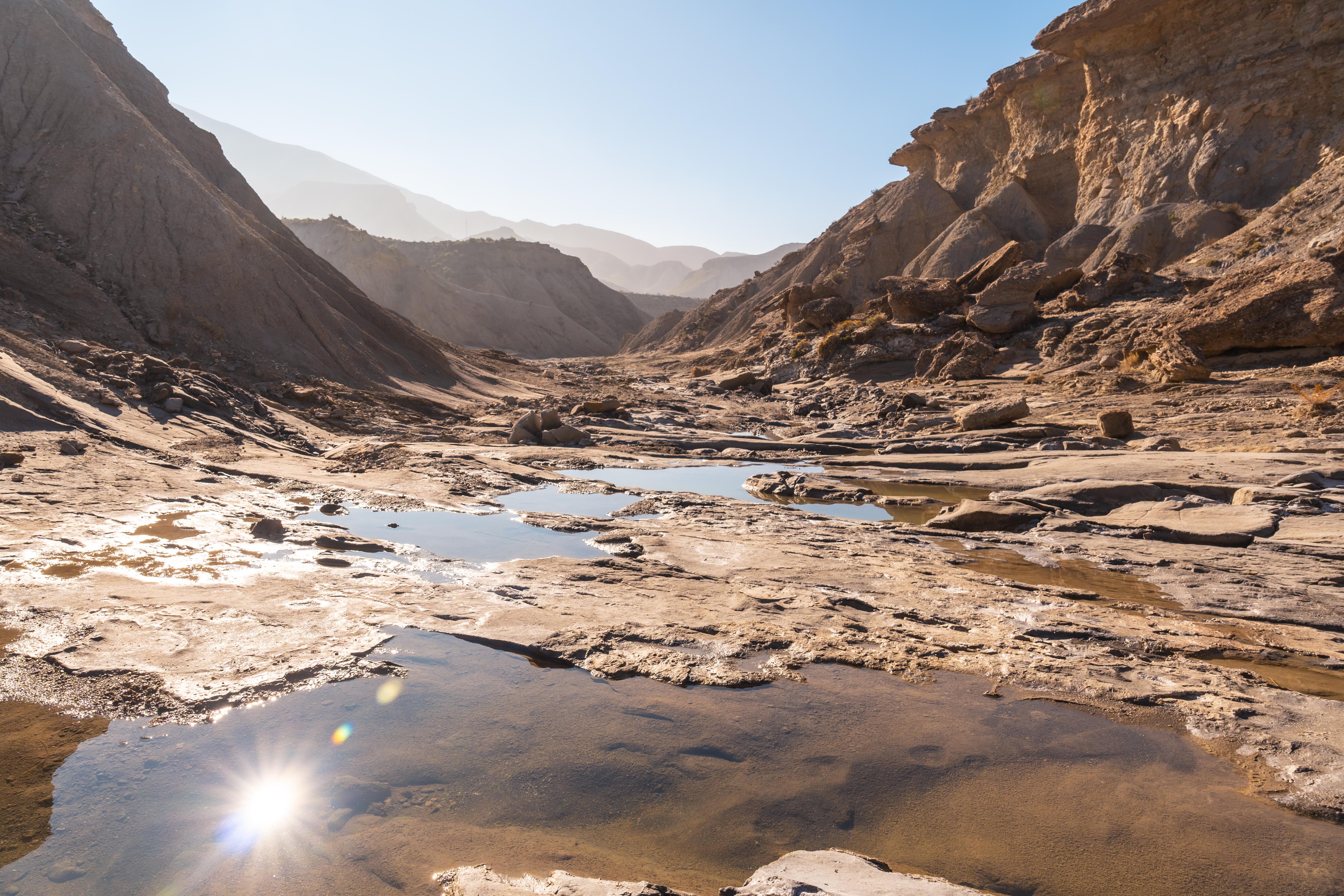
Beyond just Sad Hill Cemetery, the Tabernas Desert in Almería, Spain, was the heartland of Spaghetti Westerns in the 1960s and 70s. Several complete Western town sets were built, such as "Texas Hollywood," "Mini Hollywood," and "Western Leone." While some now operate as theme parks with stunt shows, they retain many original structures from classic films. Other, lesser-known sets have fallen into greater disrepair. These dusty, sun-baked towns collectively stand as enduring monuments to a legendary film genre, where cinematic cowboys once roamed.
24. "Zero Dark Thirty" Bin Laden Compound Set, Jordan: Recreating History

For Kathryn Bigelow’s 2012 thriller "Zero Dark Thirty," a detailed, full-scale replica of Osama bin Laden's Abbottabad compound was meticulously constructed in Jordan. This crucial set allowed for the dramatic recreation of the raid. After filming concluded, the future of such a specific and sensitive structure was uncertain. While often dismantled for security or practicality, any remaining traces or even the cleared site itself would hold a unique place in modern film history, representing the recreation of a pivotal real-world event.
25. HBO's "Chernobyl" Pripyat Sets, Lithuania: Haunting Replicas

The acclaimed 2019 HBO miniseries "Chernobyl" meticulously recreated parts of Pripyat and the Chernobyl Nuclear Power Plant in Lithuania, particularly in the Fabijoniškės district of Vilnius, which shared Soviet-era architectural similarities. While many specific interior sets were studio-based, the exterior locations and some constructed elements provided the chillingly authentic backdrop. After filming, the locations returned to their normal use, but for viewers, these Lithuanian streets are now indelibly linked to the haunting atmosphere of the series, showcasing how real places can become powerful, albeit temporary, "sets."
26. Petra Soundstage, Jordan: Indiana Jones' Temple Still Echoes
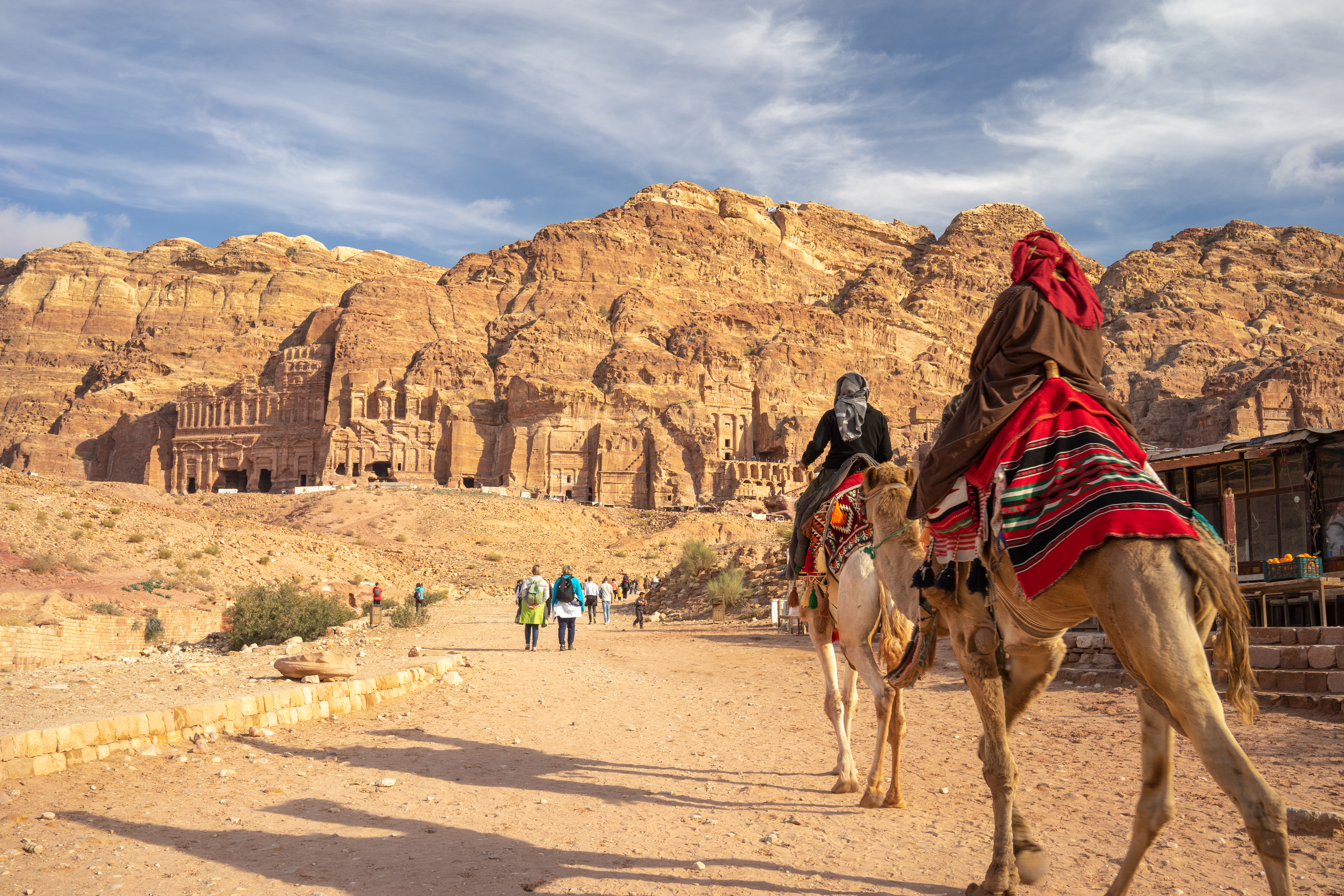
The ancient city of Petra famously stood in for the temple housing the Holy Grail in Indiana Jones and the Last Crusade (1989). While not a constructed set, the film transformed Petra’s iconic Al Khazneh into cinematic legend. Though not abandoned, the site has inherited layers of pop culture identity—it now draws fans who seek not just archaeological wonder, but echoes of Spielberg’s magic. With no props or signage left behind, only those who’ve seen the film recognize the site’s double life. Petra is a rare fusion of real-world grandeur and film mythology—quiet, imposing, and unforgettable.
27. New Asgard Village Set: Avengers: Endgame, Scotland
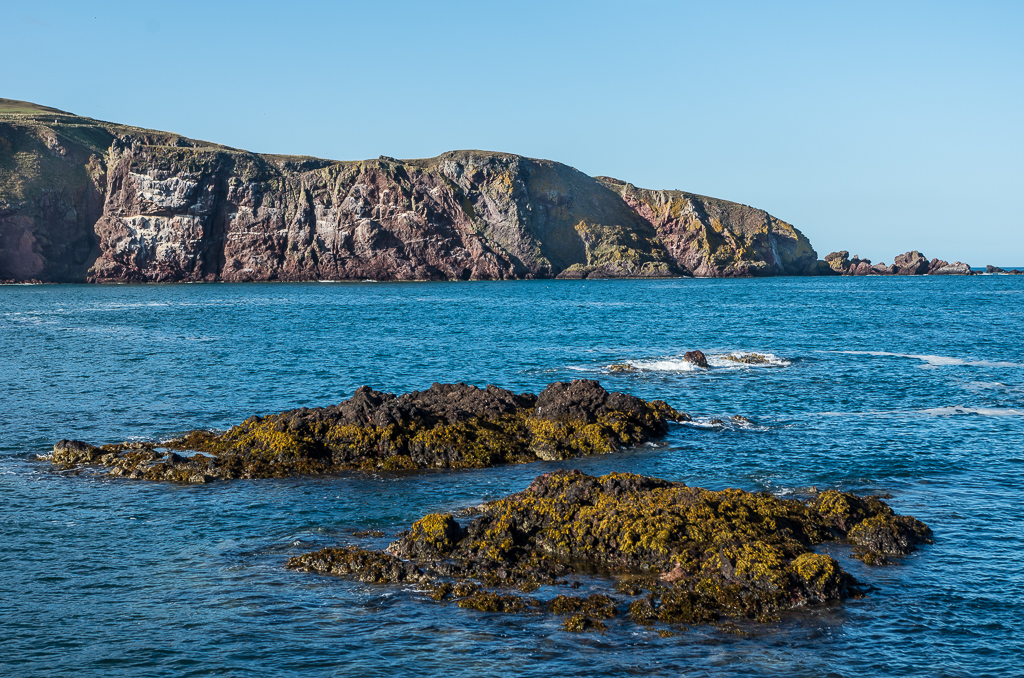
In the coastal village of St Abbs, Scotland, Marvel temporarily transformed the quaint town into “New Asgard” for Avengers: Endgame (2019). While the production dismantled much of the fabricated signage and set dressings after filming, subtle remnants and fan tributes remain. Visitors still report spotting leftover props and altered storefronts that subtly nod to Thor’s peaceful post-snap refuge. Though not a traditional ghost set, its short-lived Marvel makeover left a cultural imprint. St Abbs is now a quietly mythic place where Norse gods, Scottish cliffs, and fan pilgrimage converge in cinematic afterglow.
28. Gunkanjima (Battleship Island), Japan: Skyfall’s Ruined Lair

Used as inspiration and partial backdrop for Silva’s lair in Skyfall (2012), Hashima Island—nicknamed “Battleship Island”—is a real-life ghost town off Nagasaki’s coast. Once a coal mining facility, it was abandoned in the 1970s, leaving concrete apartment blocks and narrow streets to decay in silence. Although CGI extended its on-screen role, its haunting, apocalyptic look is entirely real. Today, visitors can explore limited areas via guided tours. Gunkanjima doesn’t just feel like a Bond villain’s hideout—it is one. A real relic of industry and cinema, frozen in time and steeped in eeriness.
29. Hobbiton’s Forgotten Cousin: Edoras Set, New Zealand
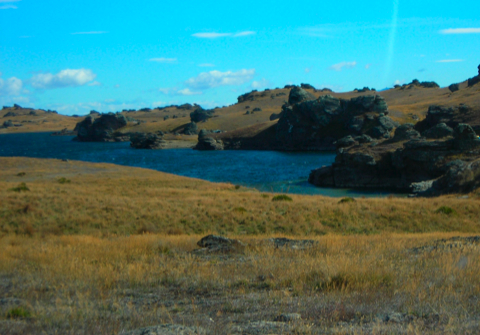
While Hobbiton in Matamata is lovingly preserved, the dramatic Lord of the Rings set for Edoras (capital of Rohan) on Mount Sunday in Canterbury was entirely dismantled after filming. Yet, the mount remains unmistakable to fans—its sweeping plains and lone summit burned into memory. All that’s left are subtle earth impressions where the Golden Hall once stood. There’s nothing but wind and sky now, but for those who remember, the ghosts of Eowyn, Théoden, and Aragorn seem to ride with it. It’s cinematic minimalism at its most poetic—no props needed, just place and memory.
30. Western Town at Paramount Ranch, California: Lost to Fire
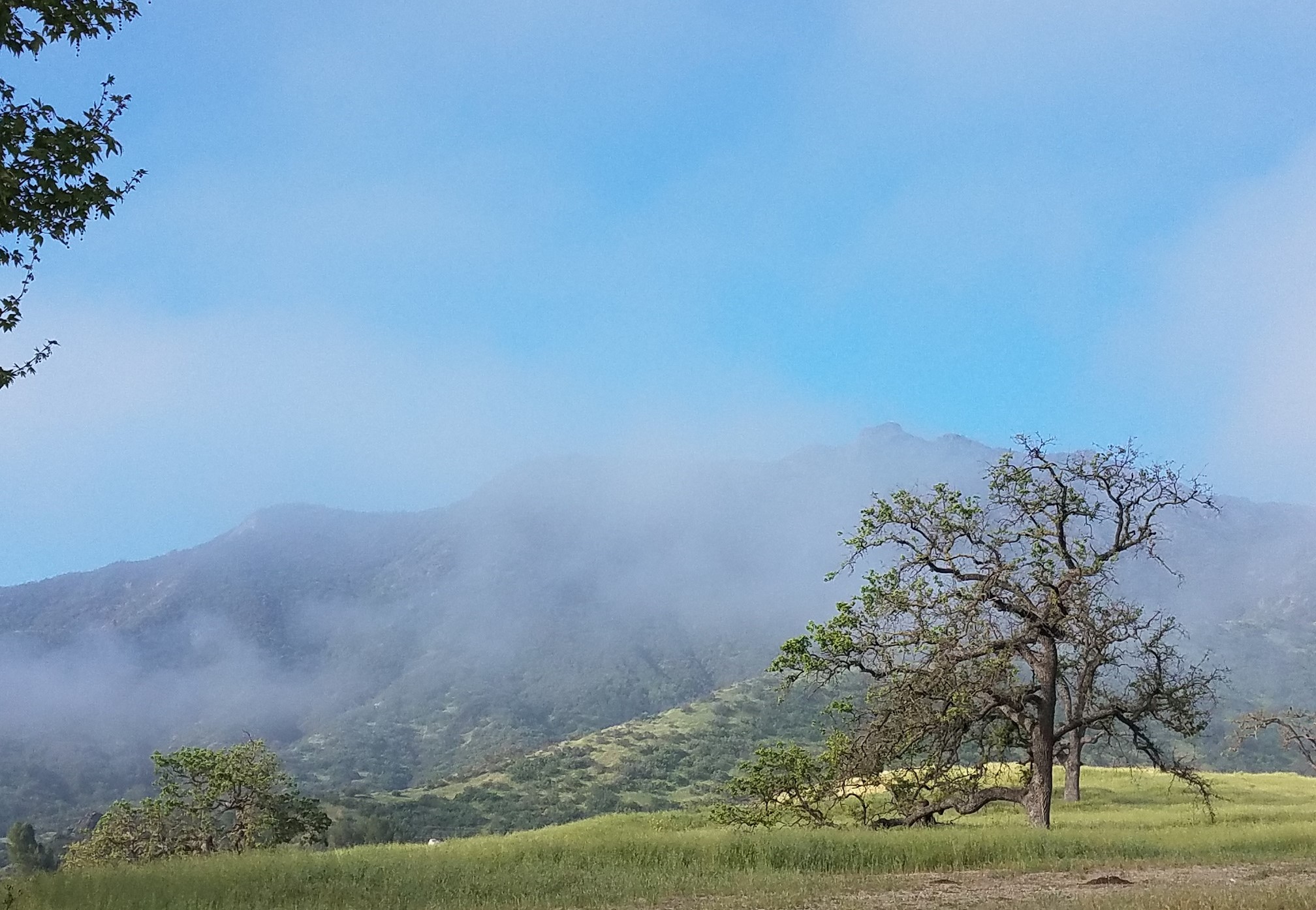
Paramount Ranch in Agoura Hills served as a versatile Western town for decades—hosting everything from Dr. Quinn, Medicine Woman to Westworld. Built in the 1920s by Paramount Pictures, the old-time facades, saloons, and storefronts formed a living backlot. Tragically, the 2018 Woolsey Fire destroyed most of it. What remains is charred framework, scorched signage, and a haunting silence where film crews once bustled. It’s a rare example of a cinematic world quite literally going up in smoke. Now a site of both mourning and reverence, it reminds us how fragile movie magic—and memory—can be.
Where the Credits Never Rolled: Echoes of Forgotten Film Worlds

These abandoned film sets aren’t just leftovers—they’re fragments of imagination frozen in time. Each crumbling saloon, rusting diner, or sun-bleached sci-fi ruin holds more than prop wood and fading paint—it holds stories. Stories of actors and directors chasing light, of fictional worlds built with care, then quietly left behind. Now, nature is the caretaker. Vines reclaim ghost towns, desert winds whisper through empty streets, and silence settles where once there was action. We've expanded our journey to 30 of these haunting cinematic relics, and what they reveal is simple: movie magic doesn’t die when the cameras stop. It lingers. In shadows. In ruins. In the awe of those who still visit. Whether you're a cinephile, an explorer, or simply curious, these sets offer more than nostalgia—they invite you to stand where fiction once lived and listen to the echoes. Because sometimes, the most powerful scenes are the ones never meant to last.

